CONTRACT AWARDS ON THE


DECOMMISSIONING

Vysus Group P.04 AGR P.24 Hydrasun P.25 Global Maritime P.26 NZTC P.28 Elemental Energies P.30 SHFCA P.32 Leyton P.34 Sword Group P.35 READ ONLINE AT READ ON PAGE 4 In this issue... Hydrogen & ccs AUG 2023 - ISSUE 71 GLOBAL ENERGY NEWS
PROJECTS MAP
THEME
& TECH
HYDROGEN & CCS
WORLD
MONTHLY
INNOVATION
RENEWABLES
MOVE
STATS & ANALYTICS
LEGAL & FINANCE EVENTS

A WORD FROM OUR EDITOR


Welcome to the August edition of ‘OGV Energy Magazine’ where we will be exploring the theme of ‘Hydrogen and CCUS’.


A big thank you to our front cover partner Vysus Group, and you can read all about their new partnership with Siccar is helping their clients to securely report on their ESG targets on pages 4 and 5 inside.


We also have contributions from the Scottish Hydrogen Fuel Cell Association, The Net Zero Technology Centre, Hydrasun, Global Maritime, Elemental Energies and AGR.


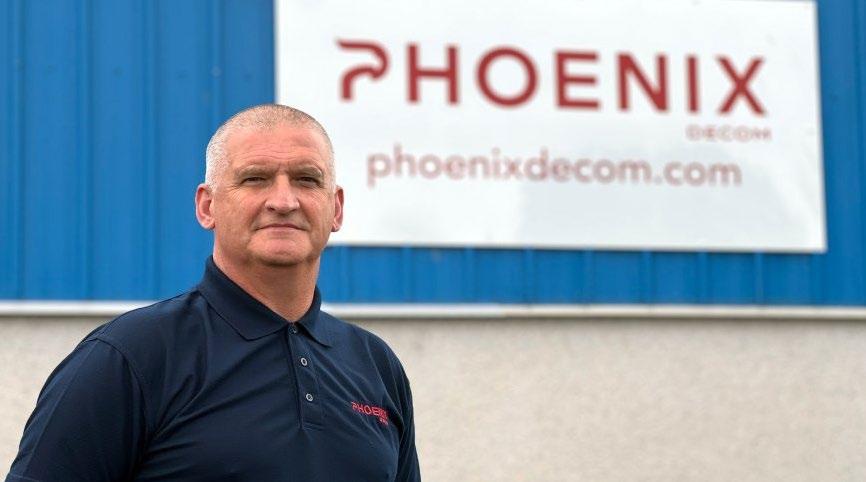
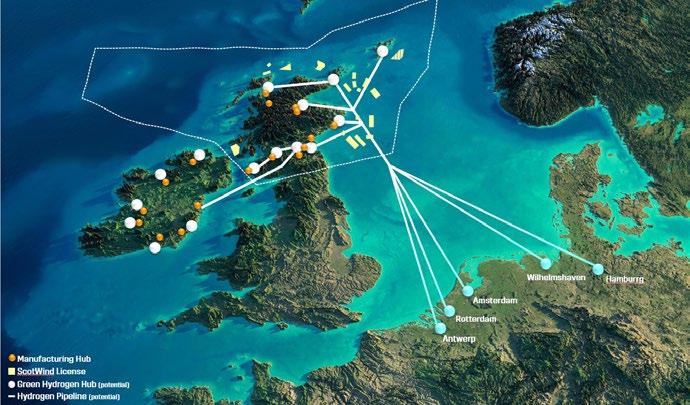
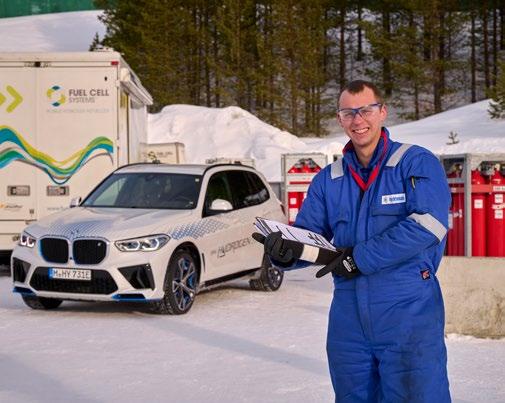
The rest of this month’s magazine as always provides you with a review of the Energy sector in the North Sea, Europe, the Middle East, the US and Australasia along with industry analysis and project updates from Westwood Global Energy Group, the EIC and Renewables UK.
Daniel Hyland, Sales and Operations Director, OGV Energy Media Group



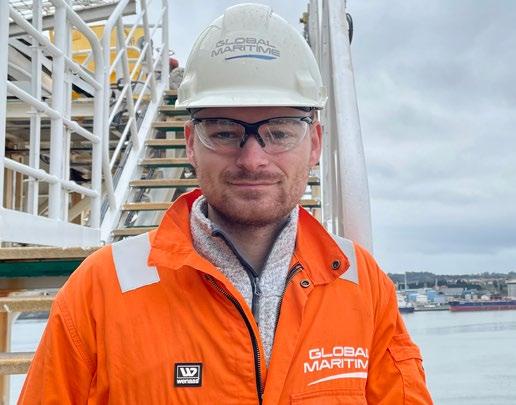
3 CONTENTS FOLLOW US VIEW THE OGV MAGAZINE ONLINE AT www.ogv.energy/magazine @OGVENERGY OGVENERGY @OGVENERGY OGV-ENERGY COVER FEATURE OGV COMMUNITY NEWS GLOBAL ENERGY NEWS WORLD PROJECTS MAP HYDROGEN & CCS INNOVATION & TECH RENEWABLES CONTRACT AWARDS ON THE MOVE DECOMMISSIONING STATS & ANALYTICS LEGAL & FINANCE EVENTS P.04 P.08 P.10 P.20 P.22 P.34 P.36 P.38 P.40 P.42 P.44 P.46 P.47
4 8 26 25 28 36 40 32 24
TRUST PASSION PARTNERSHIP & CARBON

Interview with Vysus Group
MM - I'm delighted to have David Clark and Dominic McCann from Vysus and Siccar with me today. Thanks for joining the show. Can you introduce yourselves and your organisations, please?

DC - I'm David Clark, the CEO of Vysus group. We're an energy consultancy, both technical and regulatory. We were created back in November 2020 as a carve out from Lloyd's Register. We're a relatively new name, but we're a business with global footprint and decades of history working with clients around the world.

DM - I’m Dominic McCann, the Chief Executive of Siccar. We are a scale up technology company based out of Edinburgh with footprints in London and various other geographies that our clients reside in. We're about seven years in business and have launched a platform around information security
MM - Brilliant. It's great to have you. Tell me why have your companies come together today?
DC - In our business, we've been working with clients over many years and helping customers assess their emissions and provide assurance certificates on those emission metrics. Across the industry, process has been very paper driven for many years, and our team saw a clear opportunity to digitalise and automate that process and create a solution that would allow our customers to acquire information on a continuous basis. We were really delighted and excited to meet with the Siccar team and when we started to understand their capability and the underlying technology that they could provide, there was a fantastic fit between that requirement and the customer need.
DM - We are in the technology business, and for the past few years we've been pioneering a new level of security for how people share
information with each other. We've seen an explosion in technologies looking at how data is stored, and we’ve seen how networks are trying to keep up with that exponential increase in consumption and generation. At Siccar, we often refer to the “three Vs” - the variety, volume and velocity of data.
Our foundation platform is pioneered to be able to handle these massive volumes. Vysus, with the long standing relationships they have, are really the perfect fit for where we'd like our technology to be utilised.
The coming together of the two organisations has been such a great fit.
MM - Is this data box technology really enabling carbon scoring?
DC - Yes, typically our customers have a requirement to understand and measure their carbon metrics. What our team provides is a way to go in and look in detail at how they actually calculate those metrics. We're able to take all of the input metrics and then calculate in a really robust engineered fashion what is the actual tonnage of carbon equivalent that those processes or systems use.
MM - What does your ideal client look like?
DC - Ultimately everybody's a client, but clearly we are tackling our existing customer base, which in the Vysus world is predominantly across the energy sector and complex process industries.

MM - How does the energy transition benefit from this digitalisation?
DC - The measures of ESG metrics are going to be increasingly required by all sorts of stakeholders and companies. They would need to be able to understand where they are today
to get a clear benchmark and then be able to tackle how they can significantly reduce their carbon footprint.
MM - In your experience, why are companies really interested in this capability?
DC - As we've seen around the world, shareholders and stakeholders are becoming much more focused on how their investments are being spent and the impact it will have in terms of the climate. We've seen huge initiatives of companies setting up, trying to really focus on green or low carbon industries and technologies. For many of our existing customers, they're grappling with how they benchmark themselves, how do they understand where their current emission levels are, and critically, how can they make progress?
MM - It seems to me that potentially, data box could be managing some really quite sensitive information. How do you ensure security?
DM - We use the best encryption technology to ensure security. It has been built to the highest possible level it could be, and is designed to be the next generation in protecting shared data.
MM - ESG reporting is extremely important just now. Do you think the efficiency and ability to monitor carbon is actually going to start affecting companies values?
DC - There are a couple of things here. Firstly, it's not done very well today generally - most companies and most industries are really now only just starting to build an understanding and a depth of capability to really measure efficiently their full carbon footprint. To answer your question, this is becoming critical for companies and will become very mission critical for them and their ability to attract capital. They will need to be able to
4 www.ogv.energy I August 2023 COVER FEATURE
Moray Melhuish - MM
David Clark - DC
Dominic McCann - DM
David Clark
Dominic McCann
demonstrate to their customers what they are contributing to. All the way down that supply chain, suppliers need to demonstrate the carbon cost for each step that we provide or each service or solution that we provide. Therefore, increasingly in the years ahead, this will become very much a license to operate for.
DM - Even in the months ahead. There's going to be huge amounts of pressure on everyone to get better at how we’re reporting due to the current climate.
MM - Data box sounds like it's got a huge amount of value to us, but what sort of footprint have you got as a business? What is your capability and capacity to roll this out across the industry?
DC - Vysus is a company that's two and a half years old as a name and a brand, but we are actually a business with decades of legacy. We operate across the globe; we have operations in the Americas, Europe, Middle East, Asia, and Australia. As you can see, we are truly a global business, and importantly, we've a long history of working with industries not only oil and gas but right across the energy world.
One of the things that our business has done over the last couple of years is really helped our customers and shifted the focus of the sectors into the transition and renewables place. We see that as important because the energy world is becoming much more integrated and complicated. Our experience base across those different sectors, those different geographies, is helping our customers with a lot of these new transition based technologies.
MM - I'd love to know, what are the opportunities to get involved, what types of people do you think you're going to be recruiting?
DM - We typically bring in very innovative people. We don't want to be hierarchical and structured and say our people are pigeonholed into a specific role. We are running a graduate program at the moment that's been very successful and gives young people the opportunity to dabble in whatever they want. Our graduates get some experience in sales, tech, finance, and partnerships, whilst learning about the energy industry.
I would say just be brave, ask questions, challenge us and find your place in the company because there really is an unlimited number of roles that we can offer you.
MM - Brilliant. I'd love to find out a little bit more about you individually. Can you each take me through your career?
DM - I didn't start out in technology or in energy markets. I was originally an economist, and I headed down to London, where I ended up joining Andersen Consulting where it was all about risk. I was
modeling the risk around derivative products on the trading floor. With that analytics and modeling experience I moved into big US tech firms over the years. The majority of my time was spent at SAS, one of the largest private software companies where I saw a huge opportunity for oil and gas.
I was living in Australia at the time, and got sponsorship from the owner of the company to start building predictive solutions as what I saw was just an amazing operating environment with such high risk and high accuracy. I was at SAS for ten years and absolutely loved every minute of it.
I then got pulled out of there by some colleagues to go and start a tech company that we took to just south of half a billion dollar valuation. That brought me into distributed ledger data technology and security, where I saw the potential for Siccar. About five/six years ago I joined the board of Siccar and recently came in to head up. It's been an absolute blast and I wouldn't have changed it for anything.

DC - I am an engineer, but have not done any real engineering for many years. I was an electrical engineer, but I quickly decided I wanted to be outside of traditional engineering and went into the energy markets. My first job was in central Sudan shooting seismic, I then went into the oilfield services sector and spent a number of years in Asia before coming back to the UK for the first time to run a really interesting business here in the UK.
I then ran operations in oilfield services and the facilities engineering businesses world facilities in various parts of the world, and I spent four or five years building what became quite a major business in the Middle East before coming back to the UK for a few years. Along the way, I had two or three years running an IT services business out of London. It’s been and incredibly interesting career so far. I came into my current organization about four years ago. It's been an incredible journey as we reshaped the organisation before carving this out as a new company with the creation of Vysus Group.
MM - What's been the secret to your success as you have built your own careers and companies?
DC - For me, it's people. Every business has to be about the people, the team, and therefore getting the right team dynamics, getting people aligned, getting people clear on where we are going. Every business has its bad days and any job you ever have will have good days and bad days but as an organisation, if you're able to give direction and move the business forward, then people are on that journey with you, and of course, to have a little fun along the way.
MM - How do you define success for your business?
DC - There are two or three things for me. Number one is about creating an organisation
that's clear on where it's going and it's successful in terms of growing the business. We're able to create new solutions and help our customers. This means we are scaling the business up, creating value for us as a business, and therefore generating profits and being commercially successful.
However, it is also about innovation. How can we really help bring new solutions? What is the most significant challenge for us as a planet and how do we become a low carbon world? Our businesses can help our customers right across the globe, and we're really excited about being able to do that.
DM - Yeah, absolutely echo that. Just be the change, I suppose. Can we change the way that people and businesses interact with each other through information and data.
MM - Great. How do you define success for yourself?
DM - I often joke that I recruit to put myself out of a job. Every time we're bringing someone in, they're just better and better and it augments the team. I need to be challenged to go out and find the next best things for the organisation. Success for me is not getting hauled into the office in Edinburgh or down to London, but that I'm able to think and innovate with the likes of David as to what's next, what can we do that's absolutely a change for both businesses and the market.
DC - Absolutely echo that point. As I said earlier it's about building teams and building capability. The next generation is really critical to that. I'm an absolute believer as well in pulling people up, you can get young junior individuals who have what appears to be limited experience, but you can stretch people really quite well and that creates exciting opportunities for them.
MM - In each episode of the podcast, we ask our guests to set a question for our next guest without knowing who they're going to be. In the last episode, we were out at the Kincardine wind farm with Flotation Energy.
We had Kirstine Wood and Dan Wright. They left this question for you: In terms of the energy transition and skills passporting, what skills are you looking for?
DC - Our skill set and requirements are around engineering. We're looking for domain expertise in multiple areas, such as mechanical, materials, process, chemical, electrical, risk - a broad range of technical and regulatory skills.
Our business doesn't typically deploy people to do stuff on facilities. Therefore, from a passporting requirement, we've got limited leverage on that. It's more about the breadth of technical skills that we have.
5 COVER FEATURE
watch full interview www.ogv.energy/play www.vysusgroup.com
STATS GROUP
Managing Pressure, Minimising Risk
Mechanical Pipe Connector
Piping Repair, Tie-In or Capping

seal vertification port




DNV TYPE APPROVAL














Permanent pipe to flange connection where welding may be undesirable. The slipover design and external gripping assembly enables a quick and cost-effective solution, with no specialist installation or testing equipment required.
 dual graphite seals
taper lock grips
dual graphite seals
taper lock grips
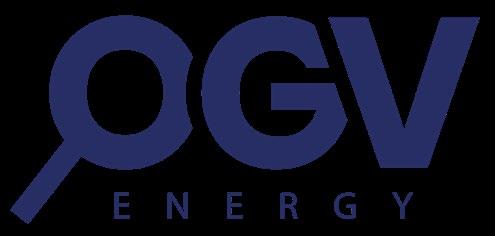


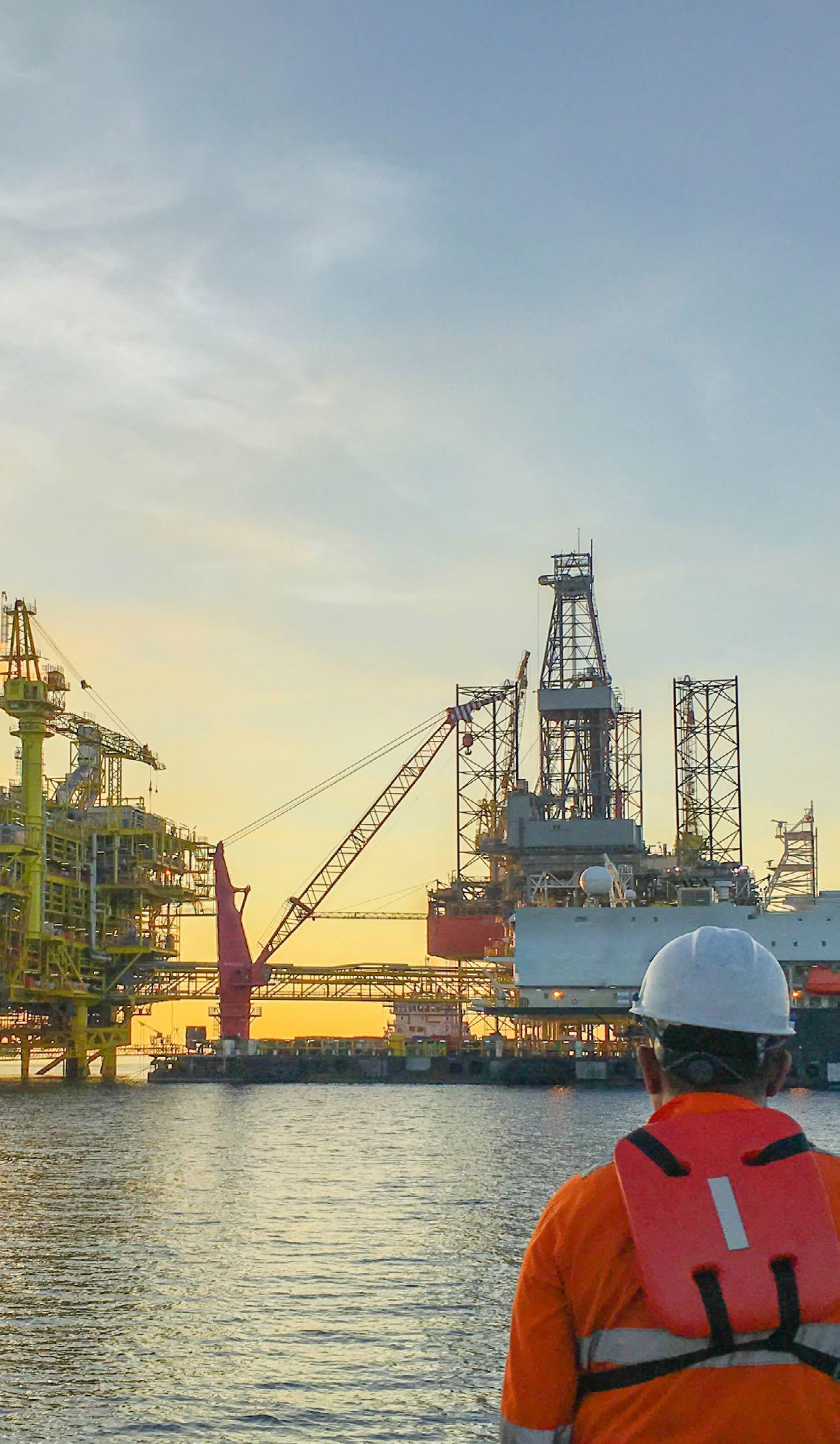



























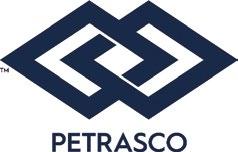










Header Disclaimer: The views and opinions published within editorials and advertisements in this OGV Energy Publication are not those of our editor or company. Whilst we have made every effort to ensure the legitimacy of the content, OGV Energy cannot accept any responsibility for errors and mistakes. OUR PARTNERS TRAVEL MANAGEMENT PARTNER LOGISTICS PARTNER Leading provider of logistics services to this industry, offering its customers airfreight, road freight, sea freight, project forwarding, customs compliance, training and consultancy, packing, crating, lashing & securing services warehousing, distribution, freight management, rig relocation and mobilisation services and offshore logistics. Corporate Travel Management (CTM) is a global leader in business travel management services. We drive savings, efficiency and safety to businesses and their travellers all around the world. Editorial newsdesk@ogvenergy.co.uk +44 (0) 1224 084 114 Advertising office@ogvenergy.co.uk +44 (0) 1224 084 114 Design Jen McAdam Ben Mckay Journalist Tsvetana Paraskova www.quanta-epc.co.uk YOUR ASSET IN SAFE HANDS Safe, efficient and low-cost delivery of Asset Management projects, ensuring best value every time. Operations Maintenance Repair orders Technical support VIEW our media pack at www.ogv.energy/advertise-with-us or scan the QR code ADVERTISE WITH OGV CONTRIBUTORS
Simon Cowie, managing partner at Infinity Partnership, has been named a finalist in the Practice Leader of the Year Category at the 2023 Accounting Excellence Awards. He won the Practice Pioneer Award at last year’s event. Simon previously won the individual honour at the British Accountancy Awards – another major industry event – in 2016. The Accounting Excellence winners will be announced at a gala ceremony at The Roundhouse in Camden, London, on Tuesday, October 3 [2023].

Simon said: “It’s a tremendous honour be shortlisted once again. It’s true what they say: you’re only as good as your team and we have an excellent team at Infinity."
asset55 are excited to announce a major project award from ExxonMobil affiliate ExxonMobil Guyana. They look forward to supporting the Uaru FPSO with their Validate and Execute software. The Validate software will ensure that the Uaru FPSO project data is validated and correct through execution phase and life of asset. In turn, their Execute software will be setup to support early execution planning and will support the project through construction, commissioning and startup. asset55’s Validate and Execute software is currently deployed on 8 major capital projects with a combined budget of over $60 billion.
Mandos Software was established in 1999 to develop software to help organisations to run more efficiently & effectively, and comply with appropriate legislation and standards, by defining and communicating their key business processes. Their Author software is used in a range of organisations of varying sizes, both in the UK and overseas. It is based on a pragmatic view of business processes and management practice and is relevant for all business sectors.

Prism Energy is a leading project & risk management consultancy company that has developed Prism Apps, its own cloudbased project management system for risk management, action management, lessons learned and management of change. The system is used extensively in the oil & gas and renewable industries.
Family-owned Scottish business, ACE Winches, announces its expansion into the Middle East with a new location and key hire in Dubai.
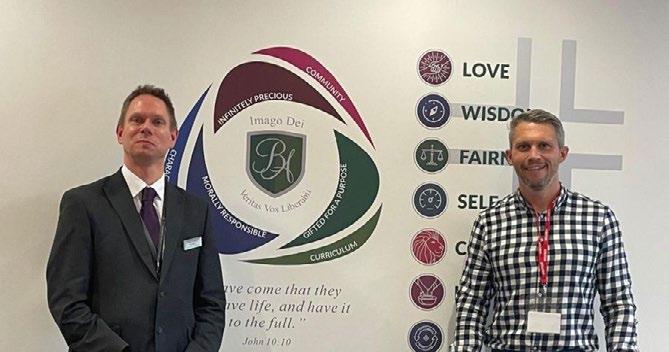
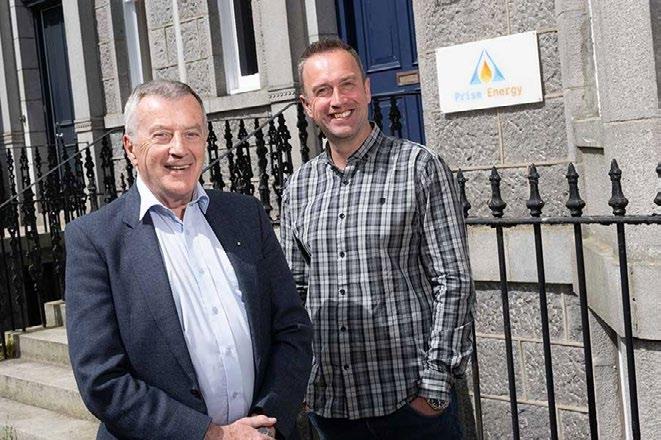
The opening of the new office marks a significant milestone for the company, as the organisation continues to expand its presence in the Middle East. ACE Winches have been operating in the region for several years, but strong customer demand for its products and services prompted the move to set-up a base.
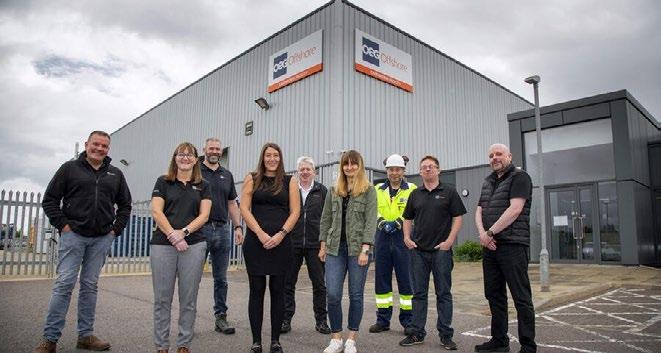
OEG Offshore UK (OEG), a leading global provider of specialist offshore equipment, is proud to announce the complete integration and rebrand of Harran Ltd, a renowned aviation refuelling expert. The move follows the acquisition of Harran Ltd in 2019 and marks OEG’s ongoing growth plans to solidify their market presence and cater to the increasing demand for specialist offshore equipment and services.
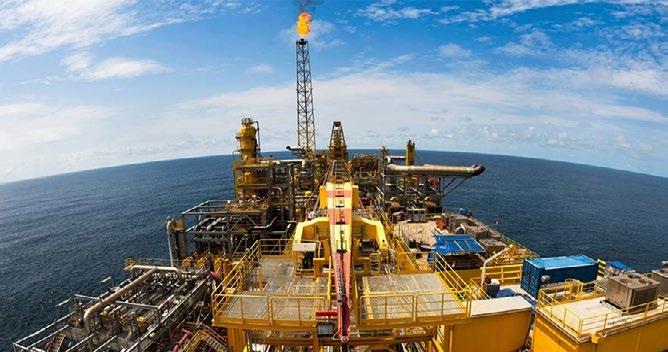
Clive Hoskisson, Managing Director of OEG Offshore UK, commented on the integration: "We are delighted to finally welcome the Harran team fully into the OEG Offshore UK family."
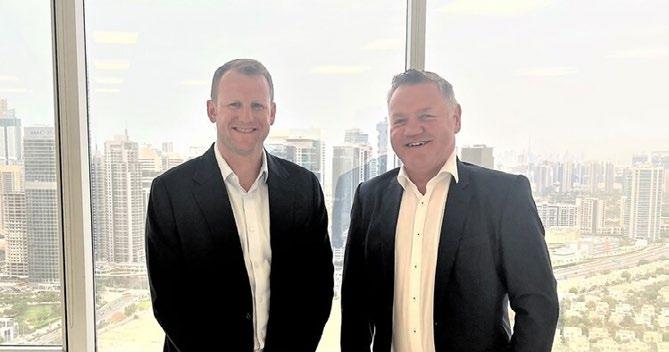


Kloeckner

This prestigious certification is a testament to the company's continued commitment to creating anoutstanding workplace culture that empowers employees and drives success. Kloeckner Metals UK firmly believes that its employees are its most valuable asset. They arethe heart and soul of the organisation, making it a truly one-of-a-kind business built on thestrength of character, spirit and unwavering commitment of its people. Their unique skills, vast knowledge and extensive experience allow Kloeckner Metals UK to make a significantdifference in the industries it serves.
Quanta, is teaming up with Blyth’s Bede Academy to help inspire and shape the future careers of students. Quanta’s Chief Commercial Officer, Steven Brett has been appointed as Enterprise Adviser for the North East Local Enterprise Partnership (LEP) and will work with Bede Academy to develop a strong careers support framework. The Enterprise Adviser Network is a national initiative of the Careers and Enterprise Company. Steven will engage with students to increase their knowledge and understanding of the world of work, particularly around engineering and the global energy sector.
8 www.ogv.energy I August 2023 OGV COMMUNITY NEWS
FIND ALL THE FULL COMMUNITY NEWS ARTICLES ON OGV ENERGY'S WEBSITE DO
YOUR NEWS FEATURED ON OUR MAGAZINE, WEBSITE & DIGITAL PLATFORMS? JOIN THE OGV COMMUNITY TODAY!
Prism Energy Acquires Mandos Software for Undisclosed Sum
YOU WANT
asset55 wins major FPSO project award from ExxonMobil Guyana
Metals UK Achieves Great Place to Work® Certification
Leading Aberdeen accountant shortlisted for top UK award
Leading aviation refuelling company rebrands as OEG Offshore
Quanta teams up with Bede Academy to inspire students and shape future careers
ACE Winches opens new Middle East office to support company growth and investment in the region
Prism Energy, an Aberdeen-based project & risk management consultancy to the energy sector, announced it has acquired Mandos Software for an undisclosed sum.
We are the leader in the design, manufacture and hire of lifting, pulling and deploying solutions in a wide range of applications including shore approach, topside and jacket installation, pipe pull, riser installations and much more. ACE Winches is the trusted partner in the offshore oil and gas, renewable and marine sectors

www.ace-winches.com
The backbone of organisation-wide resilience, providing a single source of truth across safety, security, risk & critical event management alongside a robust integrations ecosystem.


www.restrata.com

Specialists in Flexible Pipe Riser and Flowline Integrity Management. TIG are also dedicated to developing a knowledge hub for flexible pipe understanding and research by utilising joint ventures with operators.
theimpulsegroup.com

Kloeckner Metals UK is the largest mill independent multi-metal stockholder & distributor in the UK, and a key member of the Klöckner & Co. group, one of the largest independent distributors of steel and other metal products as well as one of the leading steel service centre companies worldwide.

www.kloecknermetalsuk.com

We delivering leading industry software, worldclass consulting & critical cloud solutions. The super skills and industry knowledge you need to realise your digital potential. From design to delivery and ongoing optimisation, Cegal is the perfect partner for your journey to the cloud. Give your people the ability to work at their best, every day, from everywhere.
www.cegal.com
Revive Intra is a specialised procurement company that creates an efficient custom-built workspace, designed to suit your business. From offshore installations and mobile units to office, receptions and leisure facilities, we draw on our years of experience to source quality products for you, at the very best competitive value.
www.revive-intra.com

Engineering, design, fabrication, installation, service and maintenance of offshore assets and comprehensive project management across all phases of energy projects.
www.semcomaritime.com

OceaneeringWe provide engineered services and products to the oil and gas, defense, entertainment, logistics, aerospace, science, and renewable energy industries.
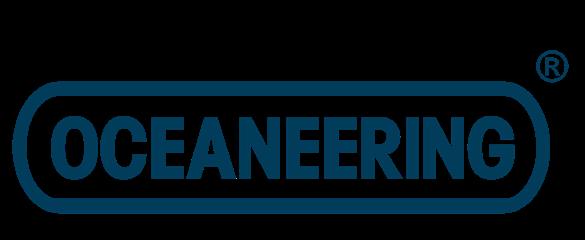
www.oceaneering.com
Rysco Corrosion Services Inc. is an Oilfield Services company dedicated to providing corrosion monitoring solutions to oil and gas producers. We can provide a timely response to the service needs of producers. Our field crews travel from North East British Columbia to South West Manitoba, and all points in between.
www.ryscocorrosion.com


At Superior Recruitment Group, we connect talented individuals with exceptional companies, creating meaningful and fulfilling careers that drive our clients' and candidates' success and growth. We strive to provide unparalleled service and support throughout the recruitment process, ensuring a seamless experience that fosters lasting partnerships and lasting impact.

www.superior-recruitment.com
Providing E2E Corporate Training, Compliance & Education Solutions in Virtual & Augmented Reality. IoT Integration with predictive AI models, leveraging best-in-class data analytics and visualisation for collaboration and Actionable insights.
riiot.digital
Caledonia Competence is a Competence and Learning & Development Consultancy providing specialist services in the area of personnel assessment and development. Core services included are the set-up, auditing and health checks of client Competence Management Systems.
caledoniacompetence.com

JOIN THE OGV COMMUNITY FOR JUST £30 A MONTH
LATEST OGV COMMUNITY SIGN-UPS
www.ogv.energy/register
August 2023
UK NORTH SEA Oil & Gas Review
 By Tsvetana Paraskova
By Tsvetana Paraskova
The UK government will “max out” the remaining oil and gas reserves in the UK North Sea, Energy Minister Grant Shapps told the Financial Times in an interview at the end of July.
The minister’s comments came after Labour leader Keir Starmer had said that if his party wins the next election, the UK would not award any new licences for oil and gas drilling in the North Sea, but would not rescind contracts already in place.
“What Labour foolishly and irresponsibly want to do is deliberately pursue a policy of self-harm by not taking that [North Sea] oil and gas but buying it from abroad,” Shapps told FT.
Offshore Energies UK (OEUK), together with Robert Gordon’s University (RGU), has produced a roadmap that outlines how the UK can support jobs, economic growth, and innovation well into the future.
According to the roadmap, the offshore energy sector, including oil and gas operators and wind developers, could invest up to £200 billion on UK energy production and technology projects by the end of this decade to help deliver the government’s energy targets. More than £90 billion of this investment could go to UK supply chain companies over the next decade if the roadmap is delivered and both government energy production and local content targets are met, OEUK said.

Supply chain companies comprise the backbone of the UK’s offshore energy industry. They account for more than 80% of OEUK’s membership, with the majority consisting of small to medium enterprises, supplying goods and services to oil and gas plus wind farm developers while driving technological innovation, Katy Heidenreich,

Director, Supply Chain & People at Offshore Energies UK, wrote in a foreword to the report.
Opportunities for the supply chain include development and licensing of new technologies, production of equipment, installation and maintenance of assets, and the eventual decommissioning of offshore energy projects, OEUK says.

Delivering the Roadmap’s goal by 2030 would enable the UK’s supply chain to accelerate the changes required to deliver net zero carbon emissions in the UK by 2050.
It could also create an additional £10 billion of cumulative value from more UK-built and delivered projects and 2,800 more turbines across 40 new wind farms. The UK could produce 10 GW of low-carbon hydrogen and develop four offshore transport and storage hubs with up to 1 million tonnes/year of carbon stored, Heidenreich added.
“Supply chain companies won’t invest without a predictable, sustainable pipeline of activity. Early investment will build a competitive supply chain that can deliver the energy transition,” OEUK said in the report.
More than three quarters of the UK’s existing oil and gas supply chain has direct cross-over with CCUS, offshore wind, and hydrogen, the industry body noted, adding that “We must grow the supply chain to capture as much value as possible in the UK.”
The North Sea Transition Authority (NSTA) re-launched in early July the digital wells database, with improved functionality and greater flexibility, which would make carbon storage well consents easier to obtain and help improve compliance with regulations.
“We have updated the system with the needs of users in mind. It is now much quicker, easier to use and responsive to their real day-to-day requirements,” Nic Granger, NSTA Director of Corporate, said.
“The more accurate and more detailed information it now collects will be very useful in making decisions about potential reuse and repurposing of wells and siting of carbon storage locations.”

www.ogv.energy I August 2023
The ongoing political debate on the future of the oil and gas licences in the UK North Sea, opportunities for the UK offshore supply chain, and a large increase in the resource estimates at one of the latest gas discoveries were the highlights of the UK North Sea oil and gas sector in the past month.
UK NORTH SEA REVIEW SPONSORED BY
10
The case for new UK oil and gas is strong, but the UK North Sea upstream sector has seen an unpredictable and volatile year with the Energy Profits Levy (EPL) posing political and fiscal barriers to operators, Wood Mackenzie said in a report in July.
“Even in a scenario where global warming is kept below 1.5 °C, UK demand for both oil and gas will continue to outstrip domestic supply,” WoodMac’s Neivan Boroujerdi, Research Director, Upstream Oil and Gas, said.
“Despite the introduction of a de facto price floor in June 2023, it does not remove the long-term uncertainty that has engulfed the sector with the prospect of a new government adding to the headwinds facing UK developments,” Boroujerdi added.
In the near future, the development of the Rosebank and Cambo oil fields would be the barometer for the future of the North Sea oil and gas, Malcolm Forbes-Cable, Vice President of Energy Consulting (Upstream, EMEA) at Wood Mackenzie, said in a recent presentation.
“From an economic perspective, the business-case for the development of these two fields is compelling and there is the added benefit of the additional energy security it would bring to the UK,” Forbes-Cable said.
Rosebank and Cambo, which have yet to proceed to full approvals and final investment decisions, would have much lower emissions when electrified compared to imports of oil into the UK, according to WoodMac. Estimates by the energy consultancy have shown that the additional emissions from imports would be 500% more than the hydrocarbons from electrified Rosebank and Cambo.
“With final investment decisions looming [FID], both Rosebank and Cambo act as barometers for the future of oil and gas production in the UK North Sea,” Forbes-Cable said.

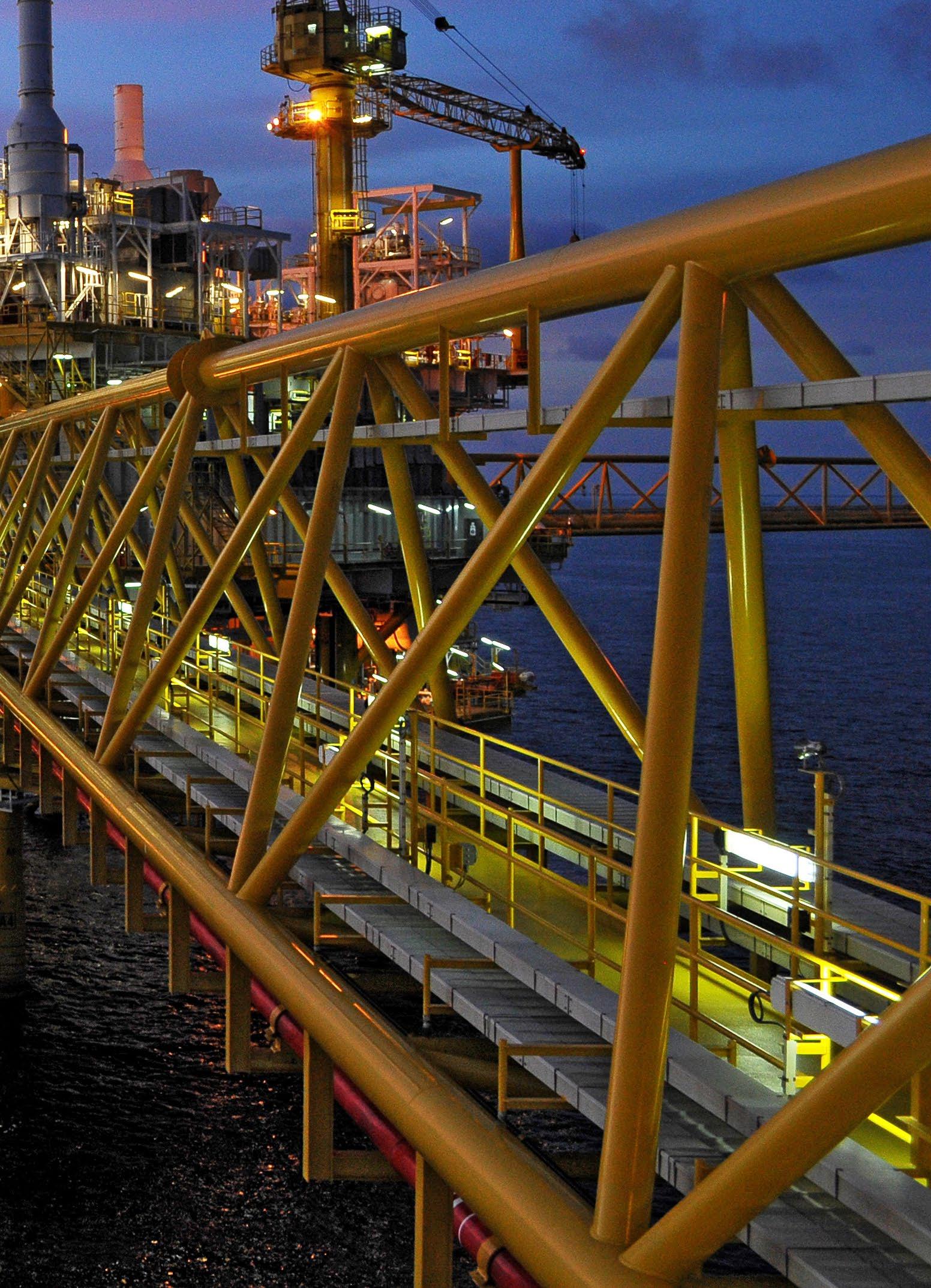
“If neither of these fields go to full development, it will be difficult to make a clear economic case for fields with less potential.”
In company news
Deltic Energy Plc, Shell’s partner in the Pensacola natural gas discovery, said in early July that the discovery could contain double the resources initially expected. Following a post well analysis, Deltic now estimates the Pensacola structure to contain gross P50 initially in place volumes of gas and oil of 342 million barrels of oil equivalent.
“Well data indicates that Pensacola contains close to double our original estimate, representing one of the most significant discoveries in the North Sea in many years,” said Graham Swindells, CEO at Deltic Energy.
Centrica and Delfin Midstream Inc signed a longterm agreement for the supply of 1.0 million tonnes per annum (MTPA) of LNG for 15 years on a free on board (FOB) basis at the Delfin Deepwater Port, off the coast of Louisiana. The agreement will see Centrica take delivery of around 14 LNG cargoes per year and could provide enough energy to heat
5% of UK homes for 15 years. The deal, valued at $8 billion, is yet another step from Centrica to ensure gas supply after a three-year supply agreement with Equinor and the reopening of the Rough gas storage facility in October 2022.
Hartshead Resources has appointed corporate finance energy sector specialist, Carlingford, to assist the company in finalising third-party financing for the Phase 1 gas fields development. Hartshead and RockRose Energy have recently submitted the Anning & Somerville Field Development Plan. Hartshead has also retained energy sector specialist LAB Energy Advisors to support the company with project finance or further equity divestment.
Reabold Resources plc said that Shell, the operator of licence P2332 in the Southern North Sea adjacent to the licence containing the Pensacola well, made a decision to relinquish the licence. Reabold Resources is high-grading its North Sea licences, as part of its disciplined approach to capital allocation, which has led to the prioritisation of the highest potential return assets in the Board’s view.
Ithaca Energy has signed an agreement to buy the 40% stake in the Fotla Discovery it doesn't already own and three exploration licences from Spirit Energy Resources Limited. The acquisition will bring Ithaca Energy’s working interest in the Fotla Discovery to 100% at completion, providing Ithaca Energy with full control over pre-final investment decision work and timing. Fotla Discovery is located approximately 10 kilometres southwest of the Ithaca Energy-operated Alba field.
Jersey Oil & Gas has finalised the Greater Buchan Area (GBA) development solution. The preferred development solution is via the redeployment of a Floating, Production, Storage and Offloading (FPSO) vessel and it is the lowest cost and lowest full-cycle carbon footprint option. With the GBA development solution now identified, work is progressing on the engineering studies that are required prior to submission of the development plan in 2024, Jersey Oil & Gas said.
The company also announced in early July that the NSTA had approved an extension to the Second Term of the P2170 Verbier licence by three years to 29 August 2026. The extension was requested in order to provide the licensees with the time required to prepare a Field Development Plan for the Verbier discovery, as part of a phased GBA development plan. The first phase of the planned GBA work programme involves re-development of the Buchan field, with production start-up targeted for 2026.
Finder Energy announced the results of their interpretation of the new Big Bird 3D reprocessing and interpretation and the high-grading of a number of appraisal and exploration opportunities within the P2530 Seaward Production Licence in the UK North Sea.
“The Big Bird 3D reprocessing project has de-risked a number of opportunities in P2530, ranging from appraisal of the Wagtail oil discovery to low-risk exploration prospects like Bancroft and Marsh,” Finder Energy’s Managing Director, Damon Neaves, said.
The licence is located in the prolific Central North Sea close to existing production facilities, which could open up the potential for fast and cost-effective pathways to first production, Finder says. The company will shortly be initiating a farmout process to secure an industry partner to fund drilling activity.
Repair, Conversion & New Build of Marine and Offshore Living Quarters & Technical Buildings Aberdeen | Blyth | Las Palmas | Dubai | Abu Dhabi | Qatar | Bahrain | KSA | Baku Proud Sponsor of the UK North Sea Review modutec.com
Europe Energy Review
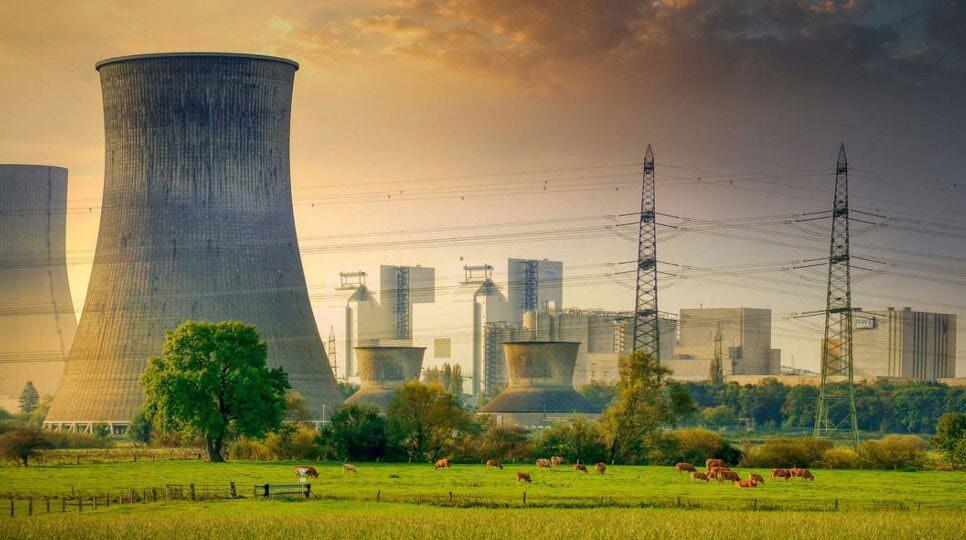 By Tsvetana Paraskova
By Tsvetana Paraskova
Carmen ranks as the largest discovery on the Norwegian Continental Shelf since 2013, the company said.
“Norway is the gift that keeps on giving,” DNO’s Executive Chairman Bijan MossavarRahmani commented.
Norway’s government has approved the development of 19 offshore oil and gas projects worth more than $20 billion (200 billion Norwegian crowns) in investments. The projects include new developments, additional development of producing oil and gas fields, and investments to increase resource recovery in producing fields, the Norwegian Ministry of Petroleum and Energy said at the end of June. The projects are being led by Aker BP, Equinor, Wintershall Dea, and OMV.
The new investments in oil and gas will create jobs and value for Norway and contribute to Europe’s energy security, Petroleum and Energy Minister Terje Aasland said.
Oil & Gas
Norwegian oil and gas operator DNO ASA announced in early July a significant gas and condensate discovery on the Carmen prospect in the Norwegian North Sea license PL1148 in which the company holds a 30% interest. Preliminary estimates indicate gross recoverable resources in the range of 120-230 million barrels of oil equivalent. At 175 million boe, the mid-point of this range,
SPONSORED BY
A day after the projects were approved, Greenpeace Norway and Natur og Ungdom (Nature and Youth) filed lawsuits with the Oslo district court, saying they believed the development of the new oil and gas fields Yggdrasil, Breidablikk, and Tyrving in the North Sea had not taken into account the impact on climate and future generations and violate a Supreme Court ruling from 2020 that required the government to assess global impacts on the environment
ENGINEERED TO TRUST
At Brimmond we specialise in the design, manufacture, rental and repair of lifting, mechanical and hydraulic equipment for industry, from our base in Aberdeenshire, Scotland.

www.brimmond.com



From hydraulic power units and pumps packages to marine cranes, umbilical reelers and filtration equipment, we offer one of the most diverse ranges of specialist hydraulic and mechanical equipment in the UK, available for deployment across the globe.
from field developments. The Supreme Court issued this ruling when it dismissed a previous attempt of campaigners to halt Arctic drilling.
In the latest lawsuits, Greenpeace and Nature and Youth argued that the assessment of the global climate impacts of the fields had been either non-existent or extremely insufficient.
“The government defies climate science and our own Supreme Court when it allows new oil fields without investigating whether these are compatible with a livable environment,” Frode Pleym, head of Greenpeace Norway, said in a statement.
Exploration and production firm Longboat Energy confirmed that its transaction with Japan Petroleum Exploration Co., Ltd to establish a joint venture in Norway had been completed with the initial investment of US$16 million received by the renamed entity Longboat JAPEX Norge AS. Longboat JAPEX is owned 50.1% by Longboat and 49.9% by JAPEX.
“In the near term, we are looking forward to the drilling of the high impact Velocette exploration well (JV 20%) which is expected to spud in September,” said Longboat’s CEO Helge Hammer.
Norway, Western Europe’s top oil and gas producer, can continue to be a stabile

www.ogv.energy I August 2023 12 GLOBAL ENERGY REVIEW
New oil and gas projects and a large discovery offshore Norway, plans for a UK nuclear energy revival, and a landmark German offshore wind tender featured in Europe’s energy industry in the past month.
RENTAL EQUIPMENT DESIGN & MANUFACTURE REFURBISHMENT & SERVICE
MARINE CRANES
Pixabay/fietzfotos
supplier of oil and gas and contribute to Europe’s energy security for many years to come, but that means that it must continue to develop the Norwegian shelf, Torgeir Stordal, Director General of the Norwegian Petroleum Directorate, said at a conference on 19 July.
“Many question whether Europe will need all this gas in a longer-term perspective. What we know is that Europe’s own production will continue to fall in the years ahead,” Stordal said, adding that “Norwegian gas is transported to Europe by direct pipelines, which makes this a very competitive solution.”
“If we want to maintain our role as a significant supplier over the longer term, we must continue to invest on the shelf, both in further development of fields, development of discoveries and exploration for new resources,” Stordal noted.
Low-Carbon Energy

UK Energy Security Secretary Grant Shapps announced in mid-July the creation of a new nuclear regulatory body, Great British Nuclear (GBN), as the government launched a competition for small modular reactor (SMR) technology, which could result in billions of pounds of public and private sector investment in SMR projects.
“By rapidly boosting our homegrown supply of nuclear and other clean, reliable, and abundant energy, we will drive down bills for British homes and make sure the UK is never held to energy ransom by tyrants like Putin,” Shapps said in a statement.
The Crown Estate announced at the end of June a record £442.6 million net revenue profit for the 2022/2023 fiscal year, up by £129.9 million compared to the previous year, mostly thanks to fee income from the signing of Agreements for Lease for six offshore wind farms through the Round 4 leasing programme.
The Crown Estate has also set out how developers will be required to recognise the critical role of ports when bidding to build new floating offshore wind farms in the Celtic Sea. In an initial phase of development, up to 4 gigawatts (GW) of floating wind in the Celtic Sea could be developed.
Scottish Renewables and the British Hydropower Association have written a joint letter to the Prime Minister calling on the UK Government to urgently support the deployment of long-duration electricity storage, including pumped storage hydro (PSH). In the letter to Prime Minister Rishi Sunak, the trade bodies highlighted that by supporting investment in long-duration electricity storage the UK Government can reduce consumer bills, CO2 emissions, and the UK’s reliance on imported gas.
Aberdeen’s local authorities have approved plans for the first phase of a scalable,
green hydrogen production, storage and distribution facility in Aberdeen. The Aberdeen Hydrogen Hub is being delivered by bp Aberdeen Hydrogen Energy Limited (bpAHEL) – a joint venture between bp and Aberdeen City Council.
The Hornsea 4 offshore wind farm has been granted consent by the Secretary of State for the Department of Energy Security and Net Zero, developer Ørsted said in early July.
While Ørsted will look to develop Hornsea 4, Swedish utility Vattenfall said it would stop the development of the offshore wind power project Norfolk Boreas in the UK, due to soaring costs and challenging market conditions.
“The announcement from Vattenfall is a major wake up call for the UK Government who are failing to take account of the increased cost pressures and economic challenges facing offshore wind developers,” Claire Mack, Chief Executive at industry body Scottish Renewables, said.

Lhyfe and Centrica have agreed to jointly explore combining their expertise to collaborate on a pilot green hydrogen production site in the Southern North Sea, in a first for the country.
“Hydrogen is going to play a key role in decarbonising the UK’s power supply by 2035 and our long-term ambition is for Rough, our gas storage site, to be the world’s largest hydrogen store, offering up to 16TWh of storage capacity,” Martin Scargill, Managing Director of Centrica Storage, said.
RWE, Mitsui, and the Port of Tilbury have formed a partnership to investigate developing a hydrogen project at the Port of Tilbury in Essex as part of a recently signed memorandum of understanding (MoU) for two green hydrogen projects. The project will also look at wider options to support the port’s decarbonisation.
RINA, the inspection, certification and consulting engineering multinational, and AFRY, a European engineering, design, and advisory services firm, have found in an initial study that the Gulf region and Europe could be linked directly with a pipeline to transport low-carbon hydrogen.
“The concept of a hydrogen pipeline connecting Qatar, Saudi Arabia, Egypt, and traversing the Mediterranean Sea to Europe may seem ambitious, but initial assessment indicates its feasibility,” the companies said.
bp and TotalEnergies won leases at Germany’s landmark offshore wind auction in early July. Germany awarded four offshore wind farm areas in the German North Sea and Baltic Sea with a capacity of 7 GW, with bp and TotalEnergies each winning two offshore concessions. The tender supports Germany’s target of having 30 GW of offshore wind projects installed by 2030, at least 40 GW by 2035, and at least 70 GW by 2045.
bp was awarded the rights to develop two offshore wind projects in the German North Sea, which marks the UK supermajor’s entry into offshore wind in continental Europe. Subject to receiving the necessary permits and approvals, the two sites with a total potential generating capacity of 4 GW would be bp’s first offshore wind projects in Germany and are fully aligned with the company’s integrated energy company strategy and disciplined capital allocation.
TotalEnergies was also awarded two offshore sites, one in the North Sea and one in the Baltic Sea. With capacities of 2 GW and 1 GW respectively, these two potential wind farms would provide electricity equivalent to the consumption of over 3,000,000 homes. The next step for TotalEnergies will be to carry out the studies required to obtain the environmental permits, as well as the technical analyses on these sites, leading to investment decisions in 2027 and commissioning by 2030.
Commenting on the tender, Stefan Thimm, managing director at Germany’s Federal Association of Wind Farm Operators Offshore, BWO, said,
“It brings us much closer to our goal of installing at least 2030 gigawatts of offshore wind by 30. And it paves the way for a new economic miracle through offshore wind, triggered by billions in investments in offshore wind expansion.”
Energy storage developer Eku Energy has signed a framework agreement with European consulting, trading, and development group Renera Energy to develop over 1 GW of battery storage projects in Italy.
As part of the agreement, Eku Energy is already funding projects with a combined capacity of over 100 MW in southern Italy.
Italy aims to generate 65% of its electricity from renewable energy sources by 2030, by which time it is predicted to be the thirdlargest energy storage market in Europe, said Eku Energy, which was initially established by Macquarie’s Green Investment Group and is now jointly owned by a Macquarie Asset Management managed fund and British Columbia Investment Management Corporation (BCI).
13 EUROPE EUROPE NEWS SPONSORED BY
Claire Mack, Chief Executive at industry body Scottish Renewables
Energy Review

 By Tsvetana Paraskova
By Tsvetana Paraskova
In the Short-Term Energy Outlook (STEO) for July, the US Energy Information Administration (EIA) expects global oil inventories to move from inventory builds, on average, during the first half of 2023, to consistent inventory draws until the fourth quarter of 2024, putting upward pressure on global oil prices over the forecast period. In the first half of 2023, global oil inventories increased by an average of 600,000 barrels per day (bpd), while they will decrease by an average of 700,000 bpd in the second half of the year. Inventories will continue to fall by an average of 400,000 bpd in the first three quarters of 2024 before increasing by 100,000 bpd in 4Q24. The EIA forecasts the Brent crude oil spot price will average $79 per barrel in 2023 and $84 a barrel in 2024, down from an average of $101 per barrel in 2022.

In natural gas, EIA expects US dry natural gas production to continue to be flat this year. This, combined with year-over-year growth in natural gas consumption, would see US natural gas inventories reducing the surplus to the five-year average, which will put upward pressure on prices.
The administration raised by 4.6% its estimate of US LNG exports in 2024, and expects those to average 13.3 billion cubic feet per day (Bcf/d) next year, up from an expected average of 12 Bcf/d this year. The jump in LNG exports next year will be the result of two new LNG liquefaction projects coming online, Golden Pass in Texas and Plaquemines in Louisiana, the EIA said.
International natural gas market conditions are currently favourable for more US LNG exports as prices at the price hubs in Europe and Asia are relatively high compared with the benchmark US natural gas prices.
The EIA assumes that US LNG exports will continue to replace pipeline natural gas that had previously been exported from Russia to Europe.
“Relatively little growth in global LNG export capacity in the next two years will increase demand for flexible LNG supplies, mainly from the United States, to meet incremental growth in global demand,” the administration said in the STEO.
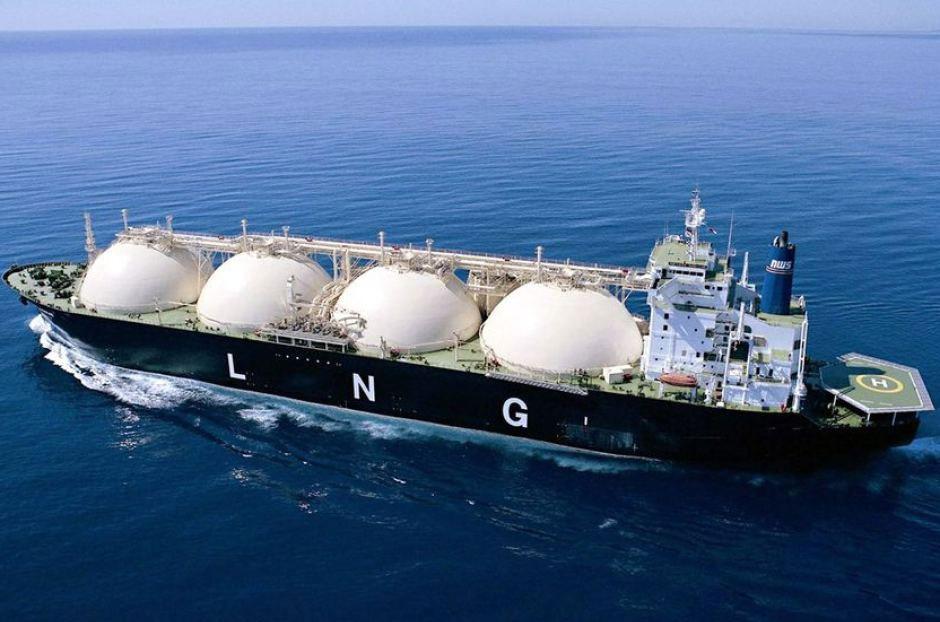
www.ogv.energy I August 2023 14 GLOBAL ENERGY REVIEW
From flare tip to the jacket, Digitising Reality can create a digital twin of your offshore asset so you can efficiently manage your resources effectively.
Assets Digitised. Savings Realised. digitisingreality.com
A proposed rule that could raise the cost of drilling on federal lands and the approval of a new major LNG export project were some of the highlights in the US oil and gas industry in the past month.
SPONSORED BY
EIA expects global oil inventory draws to boost prices
New US LNG export project approved
In the medium term, LNG exports out of the US are set for further growth, considering that US developers have already approved three new projects so far this year. The latest final investment decision (FID) on a US export project came in the middle of July from NextDecade, which decided to go ahead with the construction of the first three liquefaction trains (Phase 1) at the its 27 million tonnes per annum (MTPA) Rio Grande LNG (RGLNG) export facility in Brownsville, Texas.
“The $18.4 billion project financing for RGLNG Phase 1, is the largest greenfield energy project financing in U.S. history and underscores the critical role that LNG and natural gas will continue to play in the global energy transition,” NextDecade said in a statement.
Phase 1, with nameplate liquefaction capacity of 17.6 MTPA, has 16.2 MTPA of long-term binding LNG sale and purchase agreements with TotalEnergies, Shell NA LNG LLC, ENN LNG, Engie, ExxonMobil LNG Asia Pacific, Guangdong Energy Group, China Gas Hongda Energy Trading Co, Galp Trading, and Itochu Corporation.
TotalEnergies, which will have a 16.67% stake in the joint venture in charge of this first phase, will also offtake 5.4 MTPA of LNG from the production of this phase for 20 years.
“This project gives TotalEnergies access to competitive LNG thanks to its low production costs,” said Patrick Pouyanné, Chairman and CEO of TotalEnergies.
“LNG from this first phase will boost TotalEnergies U.S. LNG export capacity to over 15 Mtpa by 2030, and thus our ability to contribute to European gas security, and to provide customers in Asia with an alternative form of energy that is half as emissive as coal,” Pouyanné added.
Oil and gas executives of companies active in Texas, New Mexico, and Louisiana expect West Texas Intermediate (WTI) crude oil to end the year as high as $80 a barrel, according to the latest monthly Energy Indicators from Dallas Fed. Employment growth in the oil and gas sector is increasing at a slower rate compared with last year’s period of heightened energy prices, but it is still at robust levels. At the same time, input costs are expected to remain elevated through 2023.
Proposed reform of oil and gas leasing on federal lands
The US Department of the Interior proposed at the end of July reforms concerning oil and gas leasing on federal lands, which would raise the price of leasing lands for oil and gas production.
Noted API’s Vice President of Upstream Policy Holly Hopkins
and gas industry is incompatible with a world being ravaged by climate change, a crisis induced primarily by the industry itself,” said Josh Axelrod, senior policy advocate with the Natural Resources Defense Council (NRDC).
Evergreen Action Policy Lead Mattea Mrkusic said,
“Big Oil has benefited from handouts and de facto government subsidies for decades. Look where it’s left the American people: high energy costs, a volatile power market, scarred public lands, and a climate catastrophe.”
API’s Vice President of Upstream Policy Holly Hopkins noted that the proposed reforms would further burden oil and gas producers.
“Amidst a global energy crisis, this action from the Department of the Interior is yet another attempt to add even more barriers to future energy production, increases uncertainty for producers and may further discourage oil and natural gas investment,” Hopkins said.

“This is a concerning approach from an administration that has repeatedly acted to restrict essential energy development.”
The rule proposes to increase the minimum lease bond amounts, the royalty rates, and the minimum bids.
“The existing lease bond amount of $10,000 -- established in 1960 -- no longer provides an adequate incentive for companies to meet their reclamation obligations, nor does it cover the potential costs to reclaim a well should this obligation not be met,” the Interior Department said.
“Federal onshore oil and gas royalty rates are historically consistently lower than on state-issued leases and federal offshore leases; in fact, onshore royalty rates hadn’t been raised in over 100 years prior to the Biden-Harris Administration taking office. Likewise, bonding levels have not been raised for 60 years, while minimum bids and rents remained the same for over 30 years,” the Biden Administration noted.

“This proposal to update BLM’s oil and gas program aims to ensure fairness to the taxpayer and balanced, responsible development as we continue to transition to a clean energy economy,” said Bureau of Land Management (BLM) Director Tracy Stone-Manning.
Environmental groups welcomed the proposed reform, while the oil industry’s main lobby, the American Petroleum Institute (API), criticised the proposal as yet another hurdle to boosting US energy production and energy security.
“The Biden administration is recognising that over a century of business as usual by the oil
Republican US Senator John Barrasso of Wyoming, a ranking member of the Senate Committee on Energy and Natural Resources, commented on the proposed rule,
“President Biden’s assault on affordable, available and reliable American energy knows no bounds. With the stroke of a pen, the Biden administration will put American oil and gas workers on the unemployment line.”
“The president has vowed to end drilling on federal lands. This rule confirms it’s a vow he intends to keep. Last year, the onshore oil and gas leasing program returned more than $43 to American taxpayers for every dollar spent. The destructive and punitive rule will end up costing the taxpayers far more than it helps them,” Barrasso said.
API has also recently published a new poll conducted by Morning Consult showing that 90% of voters agree that natural gas and oil play an important role in strengthening the US economy. The polling further shows that an overwhelming majority of voters believe lawmakers should consider the economic importance of these resources when assessing new energy policies and regulations, API said.
Employment in the US oilfield services and equipment sector remained steady as the overall US labour market slowed in June, an analysis by Energy Workforce & Technology Council showed in July.
“While overall the labor market is cooling and the jobs market is tight, the oilfield services sector is still hiring,” said Molly Determan, President of the Energy Workforce & Technology Council.

15 USA US NEWS SPONSORED BY
Big Oil has benefited from handouts and de facto government subsidies for decades. Look where it’s left the American people: high energy costs, a volatile power market, scarred public lands, and a climate catastrophe.
MIDDLE EAST Energy Review
By Tsvetana Paraskova
Saudi arabia extends output cut into August
Saudi Arabia, the top producer in OPEC and the world’s leading crude exporter, said in early July it was extending its unilateral 1 million barrels per day (bpd) production cut into August. The move “comes to reinforce the precautionary efforts made by OPEC Plus countries with the aim of supporting the stability and balance of oil market,” Saudi Arabia added.
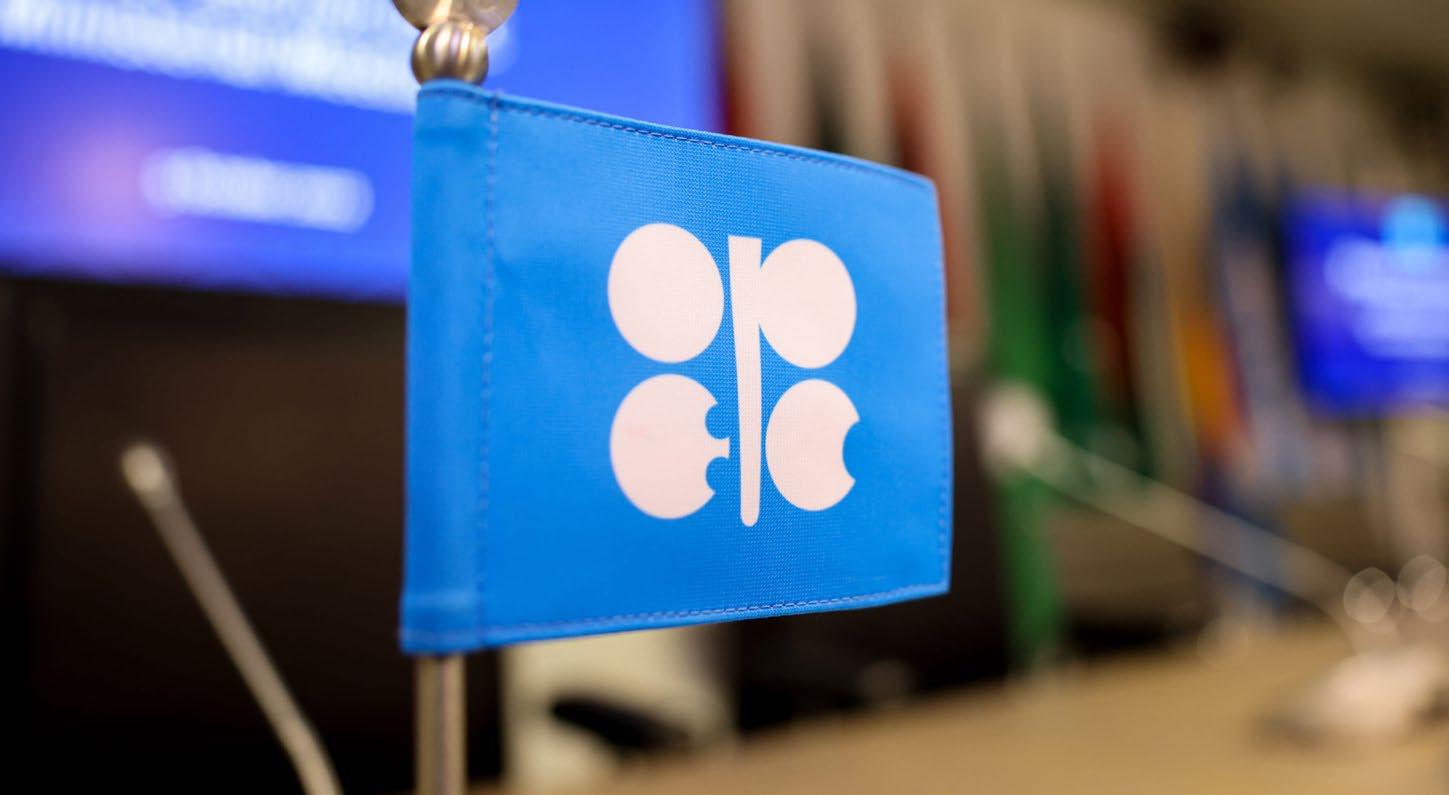
The extended cut means that Saudi Arabia will pump around 9 million bpd for each of the months of July and August.
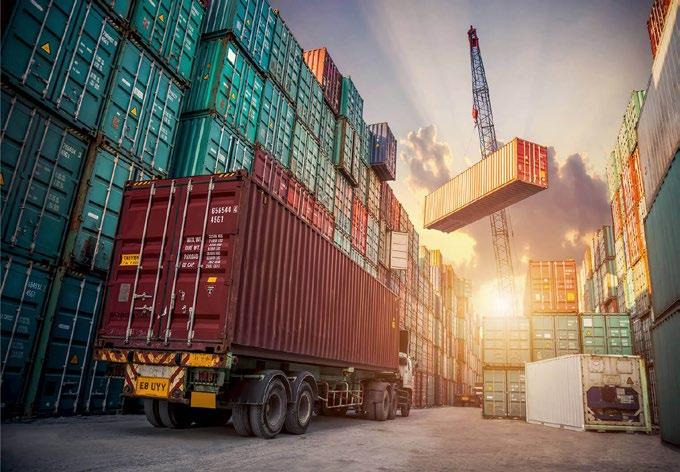
While the Kingdom’s extended cut failed to materially drive oil prices higher, analysts and traders turned more bullish on oil market balances, expecting a deficit in the third quarter of the year.
Shortly after the Saudi announcement of extension of the production cut, Russia, the key OPEC partner in the OPEC+ agreement, said on the same day, 3 July, that it would voluntarily reduce its oil supply in August by 500,000 bpd by cutting its exports to global markets by that quantity.
OPEC, the organisation dominated by the Middle Eastern oil producers, acknowledged
SPONSORED BY

Smart Procurement
At Craig International, procurement isn’t just about processes, products and numbers. We promote a culture of ownership among our people, who are trusted to get on with the job on your behalf. We’re proud of how we serve clients.
www.craig-international.com

We’re always looking for new ways to add value and routinely introduce new technological solutions to make service delivery even simpler, smoother, faster.
the cuts at its meeting on 5 July and thanked both Saudi Arabia and Russia for their voluntary reduction of supply in August.
OPEC raises 2023 oil demand growth outlook
Later in July, OPEC revised up its global oil demand growth forecast for 2023 in its closelywatched Monthly Oil Market Report, which also offered a first view at OPEC’s demand projections for 2024.
Thanks to higher oil demand in China in the second quarter, OPEC revised up its global demand growth estimate for 2023 by around 100,000 bpd compared to the June assessment. The organisation now sees global oil demand growing by 2.4 million bpd this year.
Next year, global economic growth is expected at 2.5%, slightly below the forecast for this year’s growth of 2.6%, OPEC said in its first estimates about the global economy and oil market in 2024.
Tight monetary policies are assumed to continue and key policy rates to peak by the end of 2023. Moreover, central banks are expected to engage in more accommodative monetary policies by the second quarter of 2024, according to OPEC’s latest forecasts.
16 www.ogv.energy I August 2023 GLOBAL ENERGY REVIEW
Saudi Arabia’s latest crude oil output cuts, higher oil demand growth forecast from OPEC, the annual statistics of the organisation, and a series of deals featured in the Middle East’s oil and gas industry over the past month.
Solid global economic growth amid continued improvements in China is expected to boost oil consumption in 2024. Global oil demand is set to rise by 2.2 million bpd year over year, with total world oil demand projected to average 104.25 million bpd.
China and India are expected to lead an annual increase of nearly 2 million bpd of oil demand in non-OECD countries, while OECD will see oil demand up by 260,000 bpd next year compared to 2023, OPEC said.
Oil demand in the US is forecast to reach the pre-pandemic level, mainly due to the recovery in jet fuel consumption and improvements in gasoline and light distillates demand, according to the organisation.
“In terms of oil products, transportation fuels –including jet fuel and gasoline – are expected to drive oil demand growth in 2024, with air travel expected to see a further recovery and expansion,” OPEC noted.
US liquids production growth in 2024 is forecast at 700,000 bpd, mainly from Permian crude and non-conventional NGLs, as well as from the Gulf of Mexico. Oil production in Canada, Guyana, Brazil, Norway, Kazakhstan, and Argentina is also expected to increase, thanks to new field start-ups, ramp-ups, or the optimisation of existing projects.
OPEC Oil exports and revenues jumped in 2022
OPEC’s member countries exported an average of 21.39 million bpd of crude oil in 2022, a jump of about 1.73 million bpd, or 8.8%, compared to 2021, OPEC said in its Annual Statistical Bulletin 2023. OPEC’s crude exports remained slightly below the levels seen before the pandemic.
Following the pattern from previous years, the bulk of crude oil from OPEC— 15.20 million bpd or 71.1% — was exported to Asia. Considerable volumes of crude oil — about 3.86 million bpd — were also exported to OECD Europe in 2022, compared with 3.27 million bpd recorded in 2021. OECD Americas imported 1.07 million bpd of crude oil from OPEC, which was 13.9% above the 2021 volumes.
As exports increased and oil prices rallied, the value of OPEC’s petroleum exports jumped by 54% year over year to $873.6 billion in 2022, the statistical bulletin showed.
Deals and projects

Qatar’s state-owned firm QatarEnergy expects to provide 40% of all the new LNG that will come to the market by 2029, Saad Sherida Al-Kaabi, Minister of State for Energy Affairs and the President and CEO of QatarEnergy, said at an LNG conference in Vancouver, Canada, in July.

Qatar’s state-owned firm QatarEnergy expects to provide 40% of all the new LNG that will come to the market by 2029.
McDermott has secured a major contract from Qatargas Operating Company Limited to deliver engineering, procurement, construction, and installation (EPCI) for the North Field Production Sustainability (NFPS) Offshore Fuel Gas Pipeline and Subsea Cables Project, COMP1. The contract award follows the North Field Expansion Project (NFXP) contract awarded to McDermott in 2022, which is currently under execution and remains one of the largest contracts McDermott has been awarded in its company history.
In the United Arab Emirates (UAE), Abu Dhabi National Oil Company (ADNOC) confirmed in mid-July that, following initial exploratory discussions, it had entered into formal negotiations with OMV AG about the potential creation of a new combined petrochemicals holding entity, through the proposed merger of their respective existing shareholdings in Borouge plc and Borealis AG. Borouge, listed on the Abu Dhabi Securities Exchange, is 54% owned by ADNOC, 36% by Borealis, and 10% by retail and institutional investors. Borealis is owned 75% by OMV with ADNOC holding 25%.
In early July, ADNOC Gas plc awarded $1.34 billion in contracts to Petrofac Emirates LLC and the consortium between National Petroleum Construction Co. PJSC and C.A.T International Ltd. for the expansion of its natural gas pipeline network. As part of the sales gas pipeline network enhancement (ESTIDAMA) programme, the new pipeline will extend ADNOC Gas’ existing pipeline network from around 3,200 kilometres to over 3,500 km, enabling the transportation of higher volumes of natural gas to customers in the Northern emirates of the UAE.
Scope 1 and Scope
Our aim is to create circular solutions for plastic waste, while also making progress on our ambition to achieve net-zero
2 greenhouse gas emissions across our wholly-owned operated assets by 2050.
“40% of all the new LNG that will come to the market by 2029, when all our projects are up and running, is going to be from QatarEnergy,” the official added.

“Gas will always be needed as the cleanest fossil fuel for the base-load required for electricity production and for powering industrial and manufacturing factories,” Al-Kaabi noted.
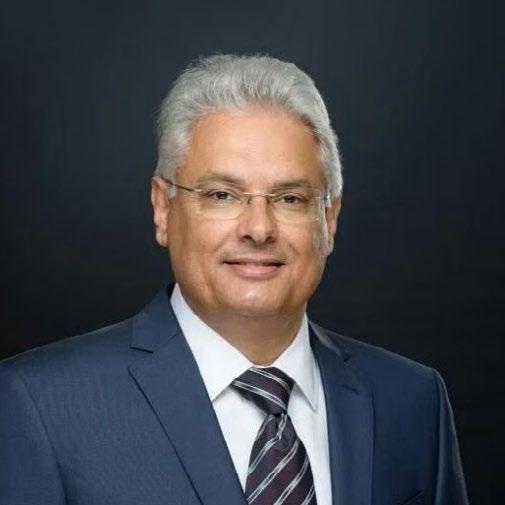
Qatar believes that its LNG carbon intensity is probably the lowest in the world, he said, adding that QatarEnergy would supply lower-carbon LNG thanks to increased capacity for carbon dioxide (CO2) sequestration.
ADNOC Gas is also looking to boost its presence on the global market as it announced a 14-year supply agreement with Indian Oil Corporation Ltd (IOCL) for the export of up to 1.2 million metric tonnes per annum (mmtpa) of LNG valued in the range of $7 billion to $9 billion over its 14-year term.
In Saudi Arabia, state oil giant Aramco said that together with TotalEnergies and SABIC it had successfully converted oil derived from plastic waste into ISCC+ certified circular polymers, for the first time in the Middle East and North Africa. The plastic pyrolysis oil, also called plastic waste derived oil (PDO), was processed at the SATORP refinery jointly owned by Aramco and TotalEnergies, in Jubail, Saudi Arabia. It was then used as a feedstock by SABIC affiliate PETROKEMYA to produce certified circular polymers.
“This achievement illustrates the importance of the petrochemical sector in creating more sustainable products and solutions,” Mohammed Y. Al Qahtani, Aramco’s President of Downstream, said.
“Our aim is to create circular solutions for plastic waste, while also making progress on our ambition to achieve net-zero Scope 1 and Scope 2 greenhouse gas emissions across our wholly-owned operated assets by 2050.”
17 MIDDLE EAST MIDDLE EAST NEWS SPONSORED BY
Saad Sherida Al-Kaabi, Minister of State for Energy Affairs and the President and CEO of QatarEnergy said.
Mohammed Y. Al Qahtani, Aramco’s President of Downstream said.
We are exhibiting! Come and speak with us at the ogv pavilion


BRENT OIL PRICES OVER THE YEARS
THE DIGITAL MEDIA STRATEGIST
UNLOCKING THE POWER OF DIGITAL INFLUENCE: THE OGV STUDIO
1 Year Ago - $103.70
OPEC’s Secretary General Haitham Al Ghais blamed policymakers, lawmakers, and insufficient oil and gas sector investments for high prices. The price of Brent crude hit an all time high in March following Russia’s invasion of Ukraine, and although prices had since declined into August, they still remained high for consumers and businesses globally.
By Eric Doyle
In a world inundated with digital noise, how do you ensure your commercial voice stands out, resonates, and inspires action within your target sectors?
How do you ensure that your efforts in digital media are pulling through directly to your bottom line? In the fast-paced digital age, having a minimal online presence is not enough; it's about crafting a consistent and compelling multi-channel narrative that captivates your audience and sets you apart from the competition.
Digital Media is a celebration…
What We Do:
Our portfolio of services is as diverse as the brands we serve. From brand development that goes beyond a logo to articulate your WHY, HOW, and WHAT, to social media management that strategically connects you with your audience, we create cohesive strategies and training programmes that fuel your commercial success.
5 Years Ago - $72.96
There was around a 10% rise in the price of Brent in August with widespread perceptions that the global oil market was tightening and could run short in the months that followed. In addition to support from geopolitical events, there were worries that natural disasters could impact the market with concerns over a potential storm off the coast of Africa.



It's a celebration of your company history, your specialism and expertise, and the solutions you bring to your industry…..and it's a celebration of your culture.

If it's done well, it transforms your commercial world, if it's done poorly, it does nothing - so it's crucial to get it right. Your website, your performance on social media, your digital advertising, video and graphics, how you are communicating to your audience and…how you are listening and reacting…all working in harmony.
It needs to be balanced…..digital balance. And it needs to mean something, it must have a measurable purpose…
When it comes to video production, we breathe life into your brand story, producing visually stunning videos that captivate and inspire. Our graphics and animations elevate your branding and content, making it unforgettable in the digital landscape.
In the digital age, mastering the art of communication is essential for standing out in a sea of voices.
Why We Do What We Do:
10 Years Ago - $111.41
Brent crude rose to hit a six-month high as the threat of Western countries’ involvement in Syrian conflicts stirred concerns over Middle East oil supplies. Oil markets had already been put on edge due to a steep drop in exports from Libya, where a month-long strike by armed security guards shut the main export ports.

When an organisation trusts us to handle their digital media, its a huge responsibility for us because we become part of their commercial DNA…it's important and that's why we take it seriously.

Who We Are:
At The OGV Studio, we are trailblasers in the world of digital media and creative communications. Our team of experts, storytellers, designers, and strategists collaborate closely with clients to unlock the essence of their brand.
At the core of our mission lies the belief that exceptional digital media empowers brands to become leaders in their sectors. We understand that commercial success in the digital era goes beyond mere metrics; it's about connecting with your audience on a profound level, inspiring loyalty, and commercial interaction. Our focus is on delivering measurable and repeatable success that can be scaled to align with your growth targets.
Everything we do is done to make people and companies the leading technical and commercial digital influencers in their sectors…it's that simple.
Eric Doyle is the Managing Director of The OGV Studio, a Digital Media Strategy company whose mission is to Energise your Media for growth. Eric is a Fellow of the Institute of Sales Professionals.
10 YEARS AGO 5 YEARS AGO 1 YEAR AGO BRENT OIL PRICE August 2023 $82.74
“GOOD MEDIA MAKES PEOPLE VISIBLE, GREAT MEDIA MAKES THEM
COLOMBIA Tayrona Block –Uchuva Discovery
Petrobras
$500 million
Petrobras is reportedly working on contracting a rig to drill two appraisal wells in Tayrona. The operator's early concepts propose the development of a subsea tie-back structure to shore, involving the installation of a gathering platform on the continental shelf.
SAUDI ARABIA
Abu Safuh Field Expansion
Saudi Aramco
$500 million
Saipem has ensured the continuity of the ongoing activity of the Perro Negro 7 jack-up drilling unit from the second half of 2023 by securing a ten-year extension to the existing contract.
ANGOLA
Block 18 Infill
Development
Azule Energy
$200 million
TechnipFMC has been awarded a substantial contract to supply subsea production systems. The current field layout will be reconfigured to accommodate new equipment that will support Azule's production expansion plan. TechnipFMC will design and build subsea trees, a manifold, subsea distribution equipment, topside controls, jumpers, flowlines, and umbilicals.
CHINA
Baodao

CNOOC
Gas Discovery
$500 million
CNOOC is considering an option to jointly develop three fields surrounding the Baodao discovery to maximise the economic viability and save costs on the project. CNOOC is planning to deploy a semisubmersible production platform tied back to about 34 subsea trees for the project.
SPONSORED BY
Energy projects and business intelligence in the energy sector
www.eicdatastream.the-eic.com
The EIC delivers high-value market intelligence through its online energy project database, and via a global network of staff to provide qualified regional insight. Along with practical assistance and facilitation services, the EIC’s access to information keeps members one step ahead of the competition in a demanding global marketplace.

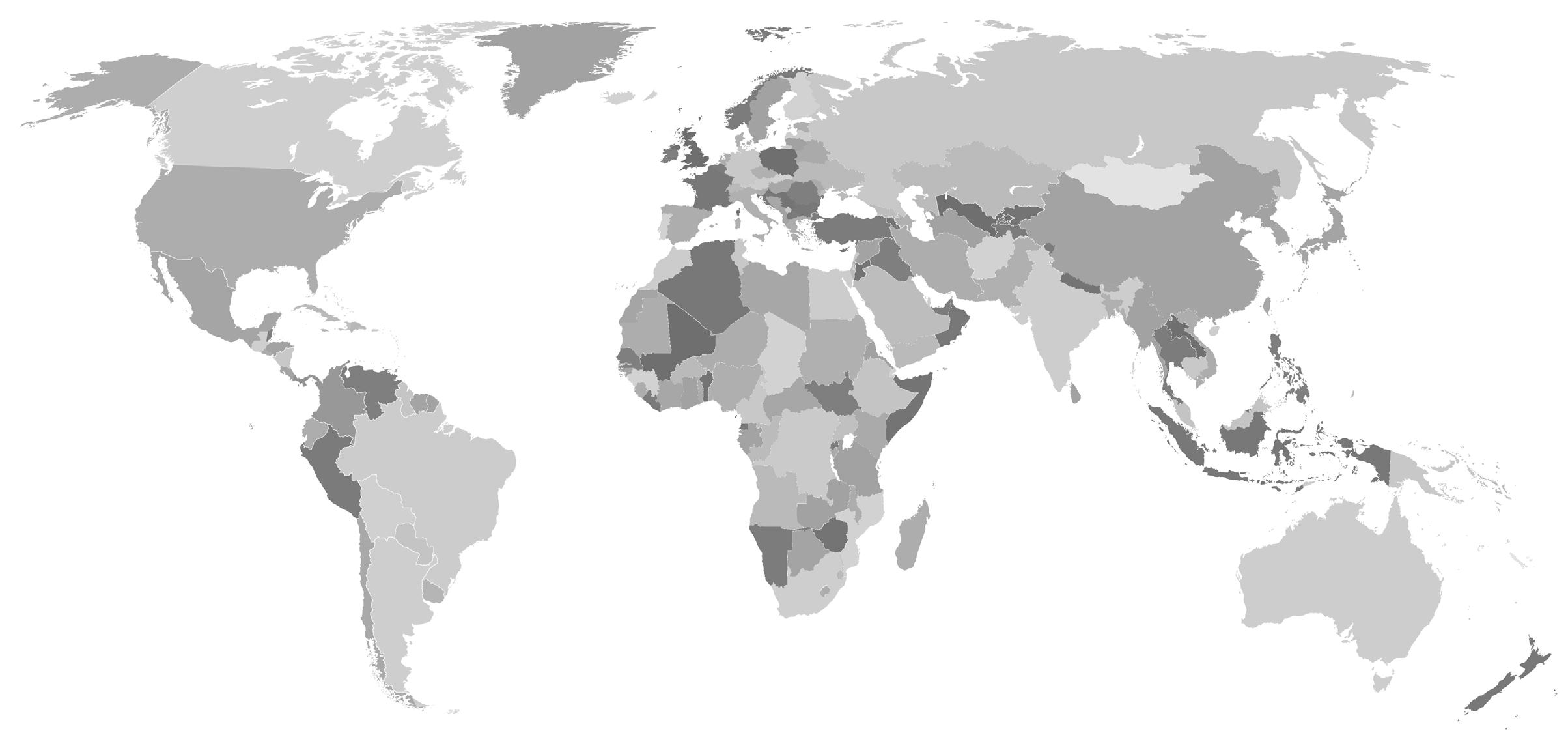
The EIC is the leading Trade Association providing dedicated services to help members understand, identify and pursue business opportunities globally.
It is renowned for excellence in the provision of services that unlock opportunities for its members, helping the supply chain to win business across the globe.
The EIC provides one of the most comprehensive sources of energy projects and business intelligence in the energy sector today.
www.ogv.energy I August 2023 20 WORLD PROJECTS
3 9 6 10 1 1 7 3 2 4 5 12 2 8 11 4
BRUNEI Brunei Shell Offshore Asset Services

Brunei Shell Petroleum Company
$250 million
Wood Group company has been awarded a US$250mn contract for the rejuvenation of BSP's offshore energy asset portfolio. The contract covers brownfield engineering, procurement, construction and commissioning (EPCC) services as well as the management of its offshore marine fleet. The contract will be valid until February 2026.
ARGENTINA Fenix Gas Field TotalEnergies
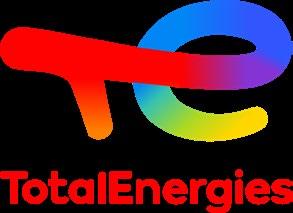
$706 million
The construction of the project has commenced with the installation of offshore pipelines. The campaign will primarily focus on installing two 35km pipelines near the Vega Pléyade platform in Tierra del Fuego. Total has chosen Saipem for the pipeline construction. The pipelay work, scheduled for August, will be carried out by the Saipem Castorone vessel to connect the new production platform to Vega Pléyade. Once the initial phase is completed, the production platform will be transported from Rosetti Marino SPA's shipyard in Italy to Argentina, where it will be installed by Heerema Marine Contractors' Aegir vessel.
EGYPT West Delta Deep Marine (WDDM) –Phase 10
Burullus Gas Company
$250 million
Partners in Burullus have signed an agreement to begin the development of Phase 10 on the WDDM concession located in the Nile Delta. The project involves drilling three new development wells, with drilling activities anticipated to start in late 2023 upon receiving regulatory approvals.
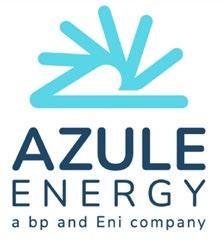

QATAR North Field Production Sustainability Compression Project – Phase 1 & 2
Qatargas

$5 billion
McDermott International has been awarded the EPCI contract for the offshore fuel gas pipeline and subsea cables project called COMP1. The scope of works are the installation of 190 km of 32-inch diameter subsea pipelines, 17 km of subsea composite cables, 186 km of fibre optic cables and 10 km of onshore pipeline. The work will be carried out by McDermott's office in Doha and the fabrication will take place in QFAB.
AUSTRALIA Stybarrow and Eskdale Fields Decommissioning
Woodside Energy
$200 million
McDermott has been awarded the engineering, procurement, and removal contract for offshore decommissioning work for the full removal of the Stybarrow disconnectable turret mooring (DTM) buoy, as part of the decommissioning of the Stybarrow field.
McDermott will provide project management and engineering services for the recovery, transportation and offloading of the DTM buoy to a suitable onshore yard facility for dismantling and disposal.
MEXICO Trion Offshore Oil Field
Woodside Energy

$7.2 billion
Hyundai Heavy Industries (HHI) was formally awarded EPC work for the FPU vessel on 30 June 2023 following a US$1.2bn proposal. The vessel will be built at HHI's Ulsan yard, in South Korea, and is planned for delivery in April 2027. First oil is expected in 2028.


NORWAY Carmen Gas and Condensate Discovery
Wellesley Petroleum AS

$500 million
DNO ASA announced a significant gas and condensate discovery on the Carmen prospect in the Norwegian North Sea license PL1148. According to preliminary estimates, gross recoverable resources range between 120 and 230 MMboe. The discovery is located close to existing infrastructure with clear routes towards commercialisation.

ROMANIA Neptun Block (Domino and Pelican South Fields)
OMV Petron
$4.4 billion
OMV Petron and Romgaz have sanctioned the development plan for the Domino and Pelican South fields. The plan will be submitted to the National Agency for Mineral Resources for endorsement. The two operators intend to invest nearly US$4.4 billion, in the project's development phase, which will take place primarily between 2024 and 2026 and will allow for the production of approximately 100 Bcm of gas.


21 WORLD PROJECTS WORLD PROJECTS SPONSORED BY 12 9 5 6 10 11 8 7
Energy security with a focus on homegrown resources, net-zero commitments, and government incentives for clean energy technologies are set to accelerate the development of the hydrogen and carbon capture and storage (CCS) industries.

Economies will need much more capacity, commitments, and financing in the future if they have a chance to achieve net-zero emissions by 2050 and reduce the hardto-abate emissions from sectors such as steelmaking or construction. But investments are on the rise and set to further grow, driven by various incentives for hydrogen production and CCS, or carbon capture, utilisation, and storage (CCUS) projects.
Low-Carbon Investments Rising
Early this year, Rystad Energy, the independent energy research and business intelligence company, said in a report that low-carbon investments are set to rise by US$60 billion, to reach US$620 billion, in 2023 as inflation weakens, with spending on hydrogen and CCUS technologies surging.
While low-carbon energy investments will be led by wind power developments, the 10% annual increase in spending will also be driven by a significant rise in funding for hydrogen and CCUS infrastructure, Rystad Energy research shows. Hydrogen and CCUS are set to see the largest annual increase in percentage terms, with investments soaring
HYDROGEN AND CCS DEVELOPMENT IS AT A TURNING POINT
By Tsvetana Paraskova
by 149% and 136%, respectively. Total hydrogen spending will approach US$7.8 billion in 2023, while CCUS investments will total about US$7.4 billion, Rystad Energy reckons.
“The outlook for hydrogen and CCUS is especially rosy as technology advances, and the large-scale feasibility of these solutions improves,” said Audun Martinsen, Rystad Energy’s head of supply chain research.
The US Inflation Reduction Act (IRA) with provisions giving incentives for clean hydrogen and CCS projects, the EU push to compete in low-carbon solutions and technologies, and the UK carbon storage licensing round and the role of low-carbon hydrogen in the UK’s plan to reach net zero by 2050 are set to spur more investments in the hydrogen and CCS sectors in the coming years.
CCS

CCUS uptake needs to grow 120 times by 2050 for countries to achieve their net-zero commitments, reaching at least 4.2 gigatons per annum (GTPA) of CO₂ captured, with some estimates ranging from 6.0 to 10.0 GTPA, according to a McKinsey analysis. This could lead to CCUS decarbonising 45% of remaining emissions in the industry sector. Even in conservative scenarios, CCUS demand would reach approximately two GTPA by 2050—a 60-fold increase over today’s pipeline of
projects, McKinsey & Company said at the end of last year.
In 2022, the CCUS market saw a nearly 100% increase in the number of project announcements, with North America leading the pack thanks to favourable policies, Rystad Energy said in a report earlier this year.
This year, the focus will be on the mature markets in Europe and North America as a flurry of projects is set to progress to the next phase. Despite expectations that project announcements will maintain the same pace in 2023, Rystad Energy expects one-third of the projects in the pipeline to experience delays.
“Dozens of terminals and CO2 carriers will be needed in the emerging CO2 shipping market, that presently will be centered around the North Sea with Norway, Denmark and the Netherlands positioned as attractive CO2 importing countries for storage,” the research firm said.
Analysts at Wood Mackenzie believe 2023 will be a milestone year for carbon capture and storage, as the technology is set to finally move from niche concept to a mainstream investment theme.
The CCUS opportunity is big—by 2033 capacity is expected to increase more than sevenfold, from 50 million tonnes per annum (Mtpa) today to around 370 Mtpa. Initially, the
www.ogv.energy I August 2023
largest growth will be mainly in North America and the UK, while Asia will start commercial operations towards the end of the decade.
Storage capacity will continue to outstrip capture capacity until the early 2030s, surging from 75 Mtpa today to over 500 Mtpa by 2033. Current licensing hotspots in the US, the UK, Canada, and Australia will continue to dominate the market, says Lucy King, Senior Research Analyst, CCUS, at WoodMac.
These four leading countries will still account for two-thirds of global storage capacity in 2033, although Southeast Asia, the Middle East, and North Africa are set to pick up pace from the late 2020s, King added.
Investments in CCUS need to exceed US$150 billion between now and 2030 if WoodMac’s estimates are to be met. Of that, more than $80 billion will be spent on capture, mostly in high-cost industries such as power generation, oil refining, and cement. The remaining US$70 billion is expected to be invested in transport and storage projects – primarily hub developments. US transportation networks and offshore storage in the North Sea will account for a significant proportion of this spend, WoodMac says.
Companies seeking first-mover advantages in the most promising CCUS hubs and new regions are set to engage in deals to build positions in the industry.
“The scene is set for more deals with CCUS positions at their centre,” says Scott Norlin Research Analyst, Canada Upstream, at WoodMac.
Hydrogen
Low-carbon hydrogen, or green hydrogen made of water electrolysis using electricity from renewable sources, could also be a game-changer in the countries’ net-zero ambitions, analysts say.
Low-carbon hydrogen is gaining traction as a critical component to achieve energy transition and long-term decarbonisation goals, data and analytics company GlobalData says.
In the past two years, the low-carbon hydrogen sector took its first big strides with a number of projects announced as part of the strategy towards energy transition, GlobalData’s latest report on the industry showed in May.
“Significant policy support and governments’ commitment to decarbonisation is spurring investments in the hydrogen space. The momentum that has been built along the entire value chain is accelerating cost reduction in hydrogen production, retail, and end-applications,” said Srinwanti Kar, Power Analyst at GlobalData.
As of February 2023, a total of 152 metric tonnes per annum (mtpa) of low-carbon hydrogen capacity was in the pipeline, of which 1.9 mtpa in construction, 136.7 mtpa in feasibility, and 6.4 mtpa in front end engineering design (FEED) stage, according to the analytics company.
Over the next decade, the cost of low carbon hydrogen production is expected to decrease by up to 60%, thanks to reduction in the cost of renewable electricity, GlobalData’s Kar noted.
“Suitable planning at the funding level, constructive regulatory framework, and proper infrastructure may facilitate and accelerate the pace of projects,” Kar said.
The emerging green hydrogen market is set to redraw the global energy and resource map as early as 2030, creating a $1.4 trillion a year market by 2050, Deloitte analysts wrote in an economic analysis.
Deloitte’s outlook estimates that more than US$9 trillion of cumulative investments are required in the global green hydrogen supply chain to meet net-zero compliance by 2050, including US$3.1 trillion in developing economies. Broken down to an annual average, investments are less than the US$417 billion spent on oil and gas production in 2022 globally, Deloitte notes.
In the first quarter of 2023, project announcements rebounded following a
sluggish Q4 2022, and global proposed lowcarbon hydrogen capacity now exceeds 79 Mtpa, Wood Mackenzie said in June. Thanks in large part to the momentum in the IRA, the US currently accounts for 15% of global low-carbon hydrogen projects. And the US looks set to overtake Australia as the leading country in the world for announced capacity, said Murray Douglas, Head of Hydrogen Research at WoodMac.
The UK, Europe, and Canada have all announced their own hydrogen policies to support low-carbon hydrogen projects, after the success of the IRA in the United States. However, the US hydrogen producers could struggle to hit the National Clean Hydrogen Strategy and Roadmap released by the Department of Energy on June 5, WoodMac’s Principal Analyst Hector Arreola wrote in a note to clients in June.
Renewable power costs, electrolyser load factor, and a slower decline in capital expenditures for electrolytic hydrogen could be serious headwinds for the US to hit its target of 10 Mtpa by 2030, 20 Mtpa by 2040, and 50 Mtpa by 2050, Arreola said.
“The level of penetration on each end-use in the U.S. is uncertain and will vary widely due to market forces, decarbonisation alternatives, policy support, and go-tomarket cost,” Arreola added.
In Europe, new hydrogen infrastructure is starting to materialise, Rystad Energy said in April. Currently, there are more than 4,300 kilometres already existing for hydrogen transportation with over 90% located in Europe and North America. Rystad Energy estimates that there are about 91 planned pipeline projects in the world, totalling 30,300 kilometres and due to come online by around 2035.
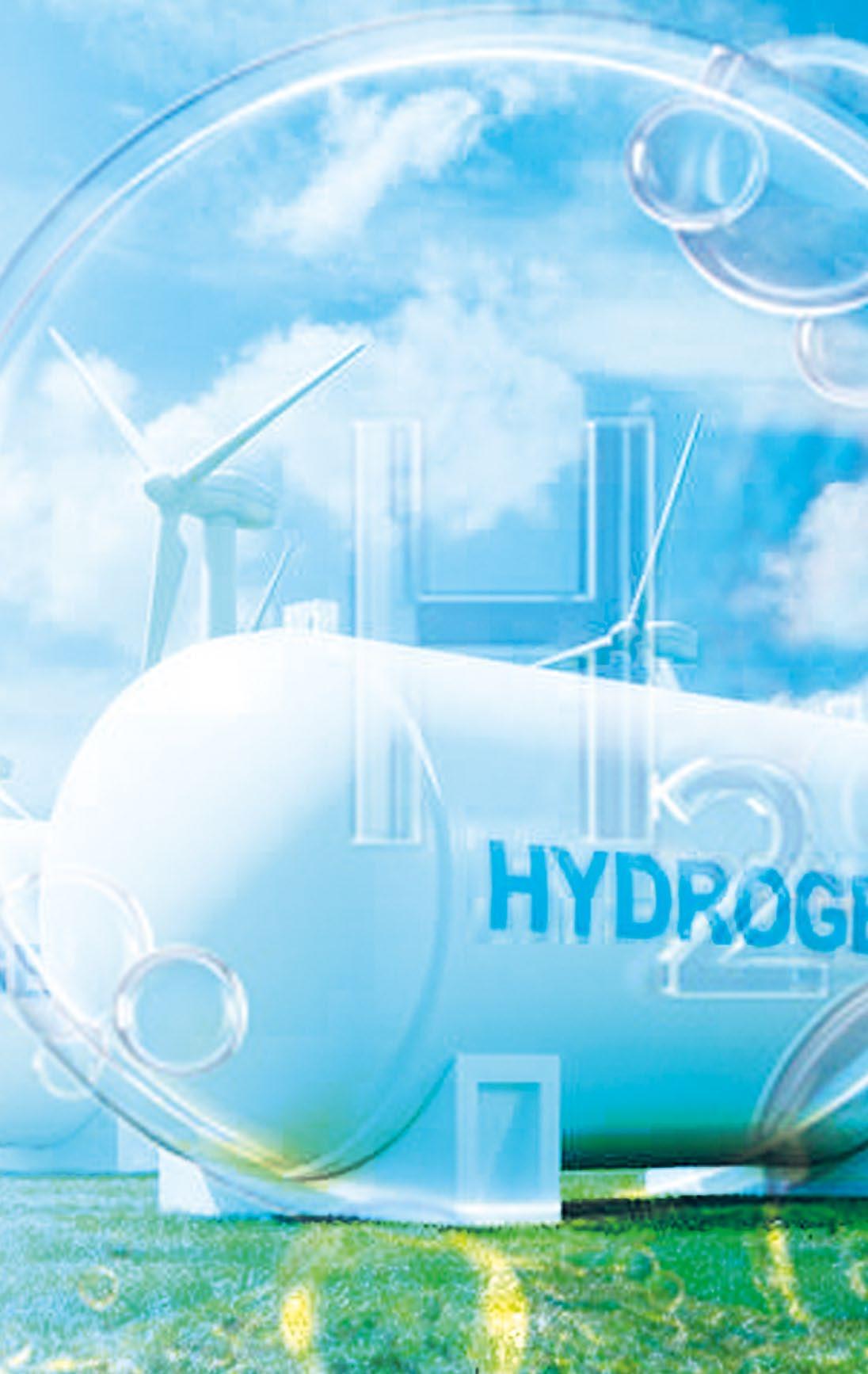
Spain, France, and Germany are among the countries committing or considering cross border pipelines to facilitate energy flows, while the UK with its extensive gas grid finds itself in a fantastic position to switch from natural gas to hydrogen, Rystad Energy research showed.
“Switching infrastructure from gas to hydrogen is possible and cost effective. But the greatest barrier is not financial, but the physical properties of hydrogen itself which differ substantially from oil and gas,” said Lein Mann Bergsmark, senior analyst, hydrogen.
23 HYDROGEN & CCS
Analysts at Wood Mackenzie believe 2023 will be a milestone year for carbon capture and storage...
4 July 2023 – Multi-disciplinary energy and software specialists AGR and Add Energy are combining their expert services in drilling, wells, and reservoirs, and energy transition technologies CCUS and geothermal, under the AGR brand.

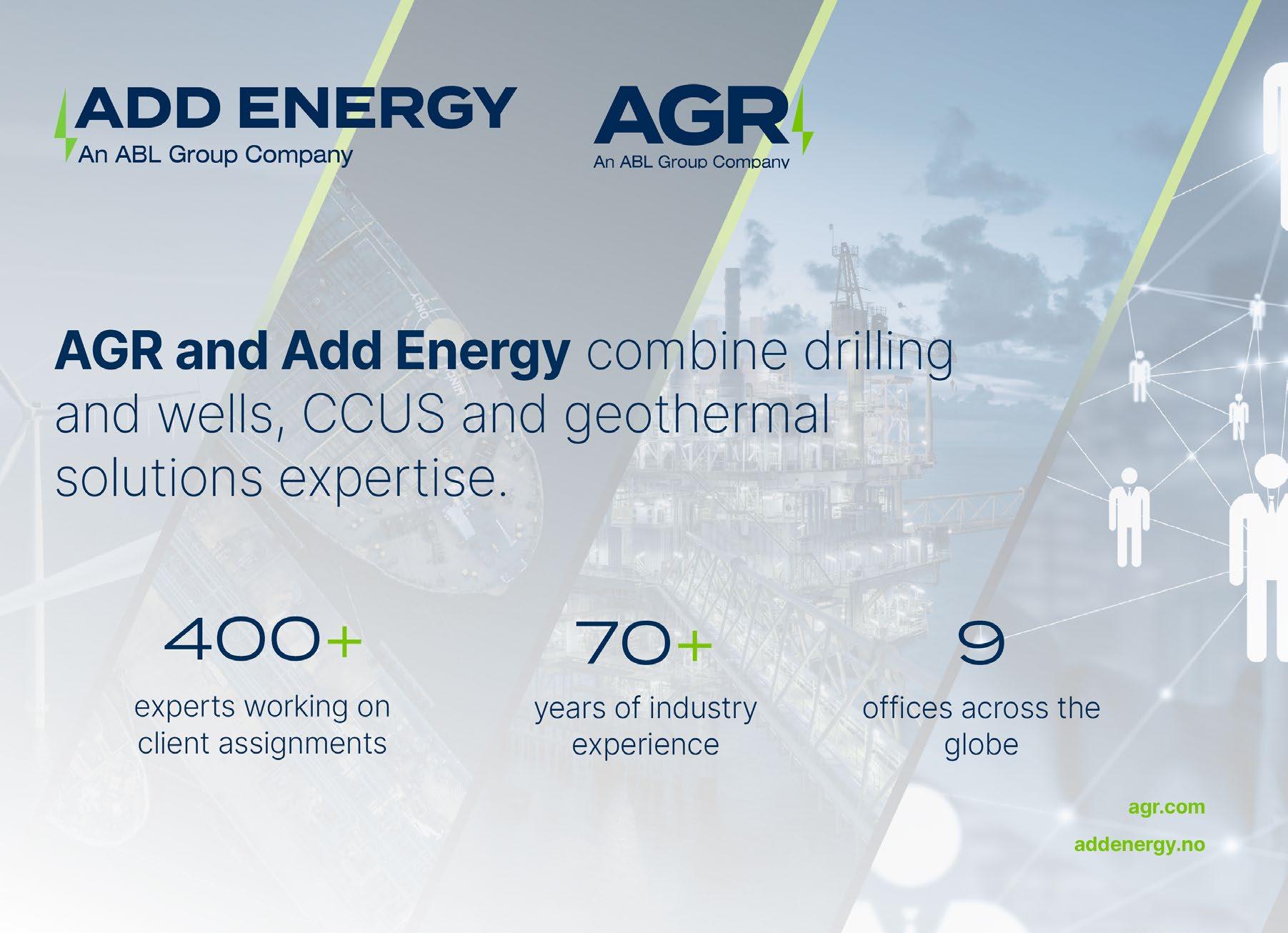
This move follows the recent acquisition of AGR and Add Energy by global energy, marine and engineering consultants ABL Group ASA. Both strategic acquisitions have bolstered the group's comprehensive suite of services to drive optimisation and efficiencies across oil & gas operations and the wider value chain.
AGR delivers drilling project management, well engineering, resource solutions, reservoir management and asset evaluation, wellsite & operations geologists, and software to support the oil and gas life cycle and decarbonisation solutions.
The combined AGR will consist of over 400 bespoke professionals working on clients projects across the globe
This consolidation broadens AGR’s overall service portfolio, bringing added value to clients and projects across the energy industry, with the combination of Add Energy’s teams, expertise and proprietary software within drilling intervention, specialised expertise in well servicing, well control and blowout contingency and in safety and risk management.

“Bringing Add Energy’s drilling and wells teams into AGR is a strategic move rooted in shared values and complementary strengths and service offerings of two industry leaders. By combining 70 years’ operational experience, knowledge and resources in well management and engineering, we create a partnership that positions us at the forefront of the energy industry. Add Energy’s well control, blowout contingency, and safety and risk management solutions strengthen AGR's overall service portfolio, allowing us to span the entire project lifecycle of wells, and enables even more efficient and optimised operations on behalf of our customers,” says Svein Sollund, CEO of AGR.
AGR and Add Energy Wells share a complementary geographical footprint. The new AGR will have offices in key energy hubs such as Norway, UK, USA, Australia, Malaysia, and the Middle East region, allowing the combined teams to collaborate in-house and build relationships.
In total, the combined AGR will consist of over 400 bespoke professionals working on clients projects across the globe. The synergy will also create increased opportunity for employee professional development, through access to new service lines and markets for AGR and Add Energy colleagues alike.
“By combining AGR and Add Energy Wells, we are strengthening our total suite of software products and digitalisation capabilities, adding competence and scale to support energy transition technologies, CCUS and wells projects. We look forward to teaming up with AGR to create the next chapter of our companies’ history,” says Dr. Ole Rygg of Add Energy.

All existing contracts and commitments will remain intact, ensuring uninterrupted service delivery to clients.
Add Energy’s asset integrity management division will not be consolidated into AGR, but will remain a service line within the international energy and marine consultants ABL.
For further information, please visit: agr.com

24 www.ogv.energy I August 2023 HYDROGEN & CCS
agr.com
Svein Sollund
FUELLING THE ENERGY TRANSITION
Empowering Industry with Hydrogen Technologies
Over the past five decades, Hydrasun have delivered integrated fluid transfer, power, and control solutions to the global energy market, providing specialist knowledge in the design, installation, and inspection services for high pressure, safety critical applications in the oil and gas, renewable energy, general industrial and marine industries worldwide.
In 2016, Hydrasun entered the hydrogen market, initially providing installation services and instrumentation solutions for flagship hydrogen refueling stations (HRS) projects and industrial fuel switching projects in the UK and Europe. More recently, Hydrasun has extended its offering to include full HRS design and build, control and instrument panel manufacture, and field services to leading hydrogen equipment manufacturers such as ITM Power and hydrogen transition leaders such as Toyota, BMW, bp, Air Products, Linde, and Air Liquide.
Hydrasun’s Investment in the UK and Europe
Over the past 2 years, Hydrasun has expanded its existing facilities in Aberdeen, and Glasgow to support the rapid growth of the hydrogen business.
In Aberdeen, Hydrasun recently launched their Hydrogen Skills Academy in recognition of the need to build on existing capabilities and develop skilled resources for the hydrogen sector by supporting the transition of its employees and others from the oil and gas sector to the hydrogen and renewables sectors.

Hydrasun also opened new engineering and production facilities in Glasgow focused on the design, integration and build of hydrogen equipment packages for a range of transport and industrial applications.
The growth of the business in both locations within Scotland has been supported by Scottish Government and funding from Scottish Enterprise as part of the Green Jobs Fund.
Hydrasun recently opened new facilities in Teesside at Stockton-on-Tees and in Ridderkerk near Rotterdam in the Netherlands, bringing increased build capacity and technical services for the manufacture and supply of control and instrument panel solutions supporting the roll-out of UK and European HRS projects.
In September 2022, Hydrasun announced the acquisition of Fuel Cell Systems Limited (FCSL), a market leader in the supply of hydrogen technology including fuel cells, modular electrolyser systems, compression and storage packages, and mobile and static HRS.
FCSL have been working with hydrogen in the UK and Europe for over a decade and has developed a range of hydrogen technologies that enable customers to trial hydrogen refueling at an affordable price. The systems are modular and scalable to provide scope for expansion as hydrogen demand grows. FCSL have been working closely with car manufacturers, fleet owners and councils to support the transition to low carbon vehicles utilising hydrogen fuel cell technology.
The small fleet approach has resulted in a series of highly successful projects in the UK and Europe where FCSL has shown that hydrogen is a commercially viable and profitable fuel option.
FCSL and Hydrasun have a longstanding relationship that draws upon the combined capabilities of both organisations and brings together specialist knowledge, technology
innovation and turnkey project delivery capability to the hydrogen market.

Tom Chicken, FCSL CEO commented:
“Hydrasun involvement has been critical to the manufacturing and deployment of our hydrogen systems. This exciting development will now mean the companies working together in this rapidly growing sector to help advance the green hydrogen infrastructure required to achieve net zero”.
The Hydrasun and FCSL team are currently working with leading car manufacturers in the UK supporting their hydrogen vehicle development programmes ensuring that hydrogen refueling technology is ready to meet the hydrogen demand as vehicle deployment increases.
For example, earlier this year, BMW announced that it will produce a hydrogen fuel cell passenger car by the end of the decade and will send 100 of their BMW iX5 Hydrogen SUVs to customers worldwide as demonstration vehicles. FCSL and Hydrasun actively supported BMW with the project providing mobile hydrogen refuelling technology to support vehicle trials conducted across Europe.
Hydrasun are also focused on providing consultancy and design services along with equipment manufacture and product supply to projects shortlisted in the UK Electrolytic Allocation Round 2022 which seeks to build an initial 250MW of hydrogen production facilities in the UK by 2025. Hydrasun are providing full HRS solutions, virtual pipeline services, and off-taker receiving facilities and pressure let-down stations in support of several of the selected projects.

25
HYDROGEN & CCS
www.hydrasun.com
Hydrogen is set to play an increasingly key role in the future energy mix by both unlocking further renewable energy production and in supporting the decarbonisation of the transport sector and carbon-intensive process industries.
CO2 Pathway from Capture to Storage

 By Eivind Dysvik – Naval Architect for Marine Operations.
By Eivind Dysvik – Naval Architect for Marine Operations.
Carbon capture, utilisation and storage (CCUS) refers to the suite of technologies that play a specific role in the decarbonisation of heavy industry and industrial clusters. CCUS is needed at scale to meet the goals set out in the Paris agreement. Currently there is evidence to suggest the world is behind schedule to meet these climate goals. However, the tide is starting to turn.
As of last year, there were over 190 CCUS projects in the pipeline globally. 2022 has seen CCUS becoming increasingly commercial and competitive in many countries. With an expectation that more strategic collaborations will accelerate the adoption of CCUS for heavily industrialised sectors.
The Norwegian Continental Shelf offers immense reservoir capacity for permanent storage of CO2, but how do we transport and inject it safely and efficiently offshore?

Similar to the oil and gas industry, there are two established ways of transporting CO2, either by pipelines or with shuttle tankers. This has been a well proven practice for decades within the oil and gas sector. Now, the same technology which extracted these fossil fuels can be further developed and used to mitigate
their environmental impact. However, there is one fundamental difference between extracting oil and gas and injecting CO2. The flow is going in the opposite direction, which is obvious, but has large implications for the design of the system.
While oil and gas flows out of the wells relatively continuously with a maintained pressure, the flow of CO2 depends on the rate it is being delivered. If there is a reduction in the volume of CO2 transported, it could create a “no flow” scenario. These “no flow” occurrences could be caused by bottlenecks in the supply, bad weather or operational constraints. Repeatedly starting and stopping the flow will cause pressure fluctuations in the well and lead to significant fatigue damage and a reduced design life of the system. Therefore, it is important to design the whole supply chain and offloading system to ensure a continuous flow of CO2 that maintains pressure in the well.
…the same technology which extracted the fossil fuel can be further developed and used to mitigate their environmental footprints.
Transport by subsea pipelines solves a lot of these problems. It is sheltered from the harsh environment of the North Sea, can transport large volumes of CO2, and does not rely on shuttle tankers which emit Green House Gases (GHG’s), and can occasionally be out of service. However, a subsea pipeline infrastructure is expensive to design, build, commission and install. It is also less flexible than using shuttle tankers.
Offshore offloading from shuttle tankers can be cheaper and faster to install. This system will also provide flexibility by loading and offloading CO2 at multiple locations. It can serve reservoirs with lower capacity where
26 www.ogv.energy I August 2023 HYDROGEN & CCS
Image Credit: Dmitry Kovalchuk
pipelines are not profitable. Furthermore, it can also be a temporary solution until the pipelines are installed, and therefore accelerating deployment of CCUS facilities.

A tanker-based system may also be beneficial regarding the fact that the reservoir storage capacity is often difficult to determine. Depleted oil and gas reservoirs have relatively well-known capacities but are not always favorable for CO2 injection due to the increased risk of leaks in the annulus of old well heads. Creating a potential where CO2 could escape the storage reservoir. Building subsea pipelines requires a large reservoir to be cost-effective. A flexible solution using STL buoys and shuttle tankers could therefore be preferred. It can also work as an extended well test. If the reservoir capacity proves to be sufficient, full infrastructure can be built. If not, the well can be sealed and the STL system reused on another location.
The main challenge with a tanker-based system is to maintain continuous flow. Stopping the injection too frequently will limit the expected fatigue life of the well significantly. This requires multiple connection points for the shuttle tankers to maintain the flow during handovers. The offloading buoys also need to be robust with high operational weather limitations. A Submerged Turret Loading (STL) buoy is an example of such a system, which has been used for oil tankers and FPSO’s in the North Sea extensively with proven reliability.
The strictest weather window is required during connection, which makes this phase critical and a source for injection stop. Because if the tanker is unable to connect to the injection buoy, the system will experience a “no flow” scenario. However, by optimising the number of tankers, cargo capacity and the injection rate, the number of “no flow” occurrences can be dramatically reduced. Simulations performed by Global Maritime’s inhouse software “GM OPSIM” has shown that it is possible to inject millions of tons CO2 from shuttle tankers with a negligible amount of “no flow” conditions. The simulations performed included on-site weather data, and a realistic tanker schedule and weather limitations.
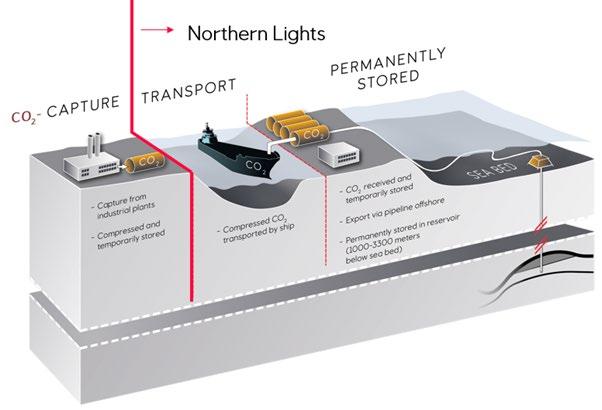
There are numerous measures to reduce the risks of “no flow” occurrences due to severe weather and connection difficulties. First, reduce the number of connections. This can be done by increasing the tanker capacities or reducing the injection flow rate. The larger the tankers or lower flow rate, the fewer connections. Second, design the subsea wellhead to be able to withstand variations in flow rate. Then, the flow can be reduced if the tanker cannot be relieved at the expected time due to weather or operational constraints. The lower the minimum flow rate is, the longer durations of storms or other delays can be endured. Lastly, additional injection buoys can be installed, which increases the robustness of the system. The extra buoy will allow a higher CO2 capacity to be connected to the wells and therefore allow the tankers to inject for a longer duration.
As discussed, globally we are behind schedule in meeting our obligations for the deployment of CCUS. However, we have demonstrated how this can be accelerated using shuttle tankers minimising infrastructure which has far lower installation costs in comparison to subsea pipelines. The offloading buoy that utilizes these shuttle tankers can, in time, be replaced by a pipeline, and the buoy relocated to another field. Transporting the CO2 with shuttle tankers to robust offloading buoys offshore can accelerate the industry and be a flexible solution. However, identifying the bottlenecks and critical phases to be able to design a robust system is crucial to succeed.
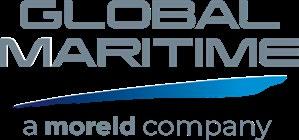
27 HYDROGEN & CCS
Stopping the injection too frequently will limit the expected fatigue life of the well significantly.
GM Opsim can effectively investigate numerous amounts of cases and show their effect on the injection capacity and downtime of the proposed investment.
For more information visit www.globalmaritime.com
Northern Lights illustration (Photo: Equinor)
UNLEASHING SCOTLAND’S HYDROGEN EXPORT POTENTIAL
Hydrogen is the versatile and environmentally friendly fuel source that has caught the attention of national governments worldwide, including Japan, South Korea, the EU, the UK, the US, and China. With zero emissions at the point of use, hydrogen offers a cleaner burning alternative to natural gas, commonly used for heating homes in the UK.


The UK government's hydrogen strategy aims to nurture domestic capabilities and technological expertise, positioning UK companies at the forefront of the global hydrogen market while creating export opportunities. Key components of the strategy include establishing regional and national distribution networks, multiple storage sites, and import/export infrastructure by 2030.
Recognising the urgent need to decarbonise heat intensive industries and transport, the UK government has made a commitment in its Heat and Buildings Strategy to scale up the use of heat pumps and district heating systems. Additionally, by 2026, a decision will be made on the potential benefits of incorporating hydrogen as a heating solution alongside low-carbon technologies. Furthermore, to enhance the UK’s energy security, the government set an ambitious target of doubling its lowcarbon hydrogen production capacity to up to 10GW by 2030.
As well as ensuring hydrogen for domestic use in the UK, Scotland can also benefit from becoming an exporter.
Scotland, with its abundant renewable resources, including offshore wind, is poised to play a crucial role in this endeavour. With an Exclusive Economic Zone covering 462,315km² and some of Europe's highest capacity factors for offshore wind, Scotland possesses significant low-cost hydrogen production potential. The International Energy Agency's Hydrogen in Northwest Europe report, published in 2021, further underlined Scotland's immense capabilities.
The opportunity spans continents. The European Union (EU) has given hydrogen a noteworthy role in its future energy strategy. Demand is predicted to be 20 million tonnes, of which 10 million tonnes is to be produced domestically and 10 million tonnes will come via imports.
In a nutshell, as well as ensuring we have enough hydrogen for domestic use in the UK, Scotland can also benefit from becoming an exporter, which holds vast economic implications, potentially generating hundreds of thousands of green jobs.
From pipe dream to reality
To become an exporter, you need a robust transport and distribution system. At the Net Zero Technology Centre (NZTC) we’ve just delivered the first phase of our Hydrogen Backbone Link (HBL) project which embodies this spirit of ambition, ingenuity, and innovation. The project, which received funding from the Scottish Government’s Energy Transition Fund (ETF) and match funding from industry, is one of seven projects to get a share of the £16.5 million awarded to NZTC to accelerate a range of energy transition projects that will help deliver Scotland’s net-zero economy.

The HBL provides a cost-effective route to market for Scottish green hydrogen into NW Europe, evaluating the option of a new pipeline against leveraging and repurposing Scotland's existing offshore oil and gas infrastructure.
The beauty of the HBL project lies in its feasibility. There are very few technical barriers that cannot be overcome, thanks to existing equipment designs, a skilled workforce with transferable skills from other sectors, and the pressing need for transitioning to cleaner energy sources.
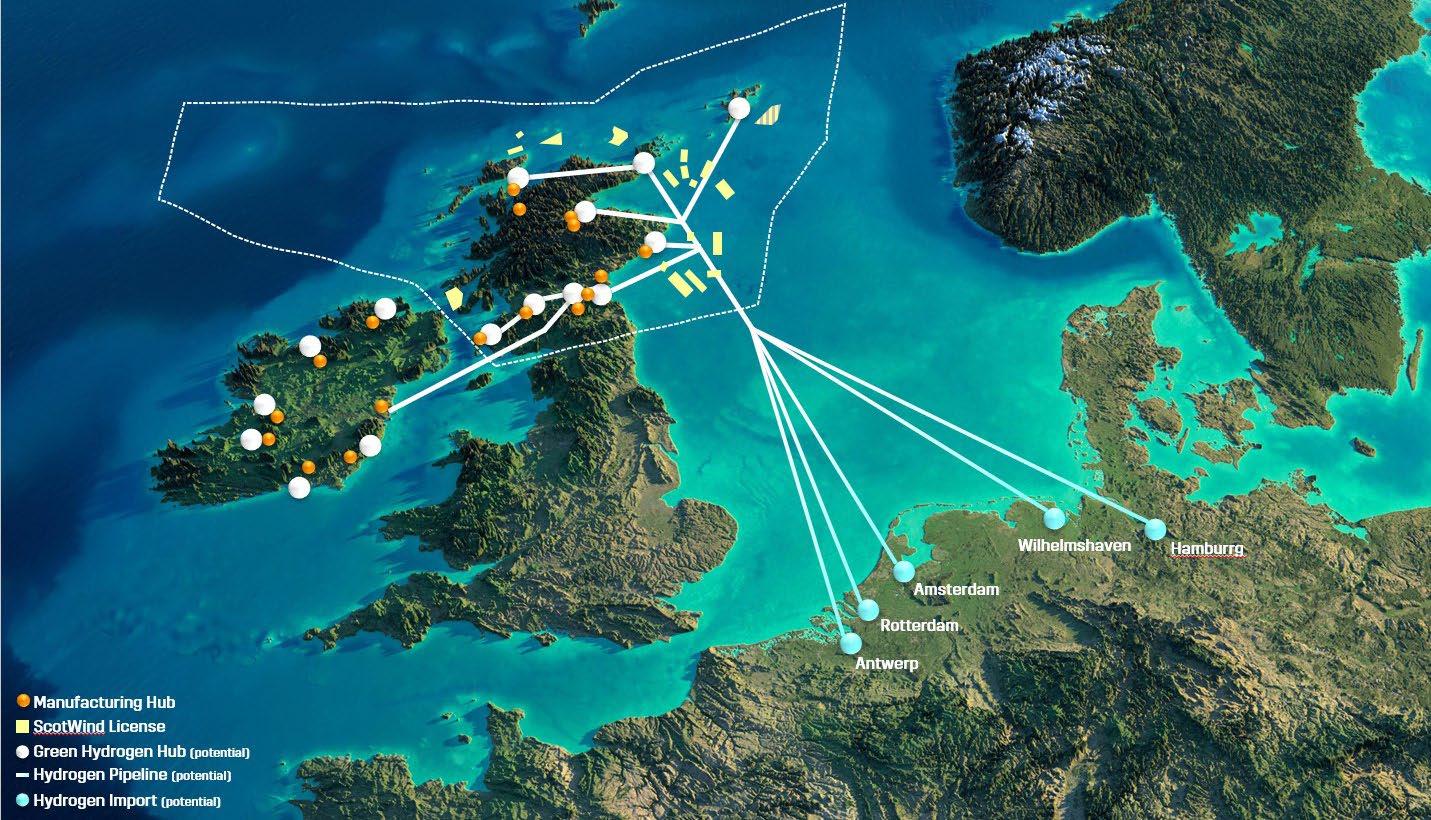
28 www.ogv.energy I August 2023 Image Credit:
Dmitry Kovalchuk
For more information visit www.netzerotc.com
Phase one of the project concluded that whilst repurposing existing pipelines is feasible, technical complexities and current hydrocarbon utilisation suggest that a purpose-built pipeline route is preferable. The new pipeline, connecting Scotland's east coast with Emden in Germany, will provide a direct link to market, meeting growing demand and offering favourable economics.
Scottish green hydrogen will be cost-competitive compared to other globally sourced hydrogen from countries and regions such as Canada, Chile and the Middle East, thanks to the lower-thanpredicted transportation costs.
The enabling technology to deliver the HBL is, for the most part, well advanced. However, our research highlights the need for public and private investment to accelerate development, reduce the cost and scale-up emerging compressor technologies, such as turbo, electrochemical and compact centrifugal designs. Whilst some existing technologies such as valve and flow meter designs are transferrable to hydrogen service with minimal modifications, designs must be tested to verify calibration ranges and confirm the operational limits.
Cultivating cross-border collaboration

As previously mentioned, Europe will need to import hydrogen to meet projected demand. A new pipeline from the UK could meet up to 10% of Europe's projected hydrogen import demand by the mid-2030s.
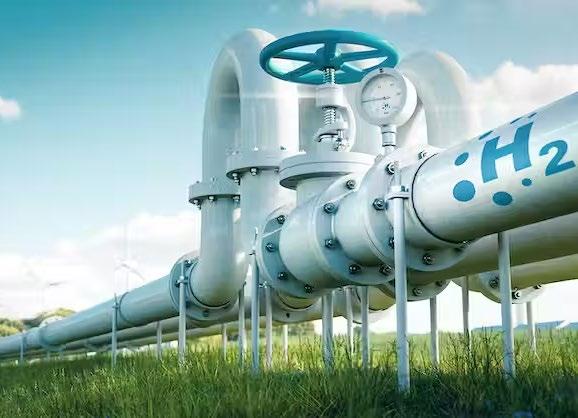
Therefore, cross-border collaboration is key to making the HBL a reality. The UK HBL complements the European Hydrogen Backbone (EHB) initiative which consists of a group of 32 energy infrastructure operators. By sharing learnings across research, development, and driving alignment on cross-border policy we can fully realise the mutual benefits of the growing hydrogen market.
With its commitment to green energy, abundant resources, and groundbreaking projects like the Hydrogen Backbone Link, Scotland has the potential to become a global leader in the hydrogen revolution.
The full report will be available to download mid August
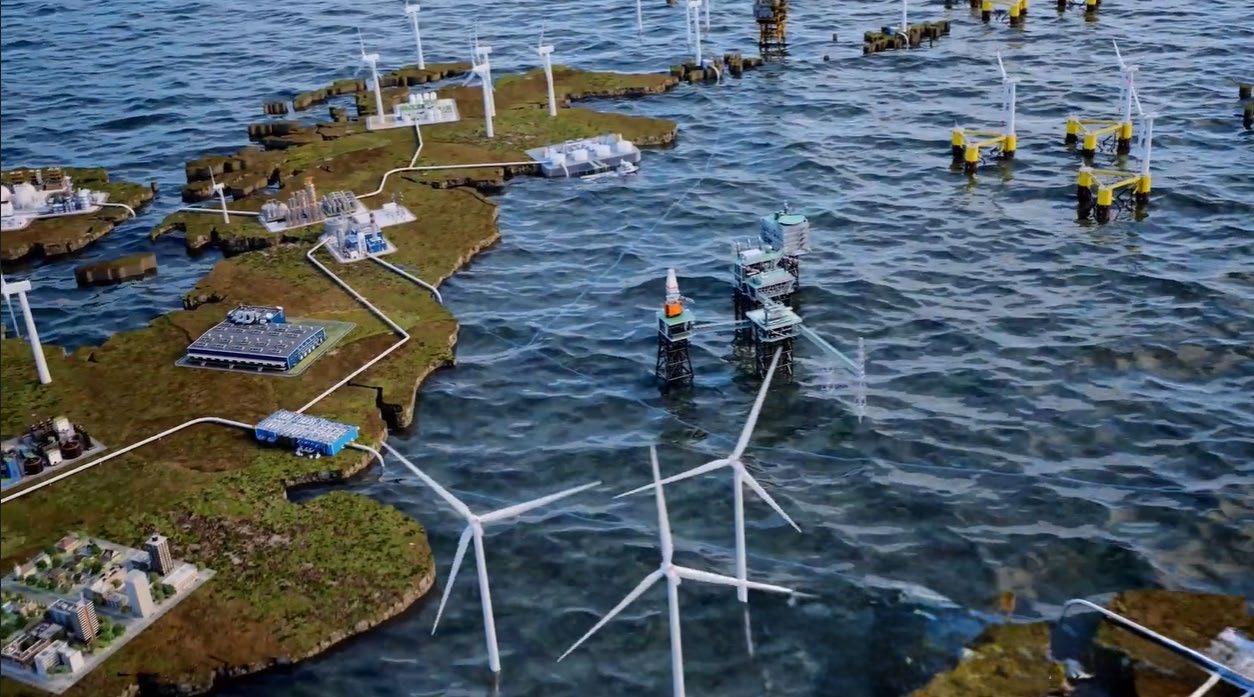
29 HYDROGEN & CCS
Roy Stenhouse, Chief Impact Officer, NZTC
WELL EXPERTS ELEMENTAL ENERGIES SPEARHEADING GLOBAL CCUS EFFORTS
Energy companies are clear on the central role they must play to achieve net zero by 2050. Carbon capture and storage (CCS) offers significant potential in helping hard-to-abate sectors reduce their carbon footprint and is a major consideration in most countries’ efforts to meet Paris climate targets. Elemental Energies’ Julie Copland explains why well engineering must play a central role in delivering CCS projects.
According to McKinsey, CCS activity will need to grow 120 times by 2050 before those net-zero commitments can be achieved. One major element which is often overlooked when considering CCS projects is the role that wells infrastructure, both legacy and new, play in successful project execution. Well engineering sits at the core of successful CCS projects and is an area that must be addressed at the earliest stages of CCS planning.
Hubs of CCS activity are beginning to appear around the world’s mature oil and gas regions. Detailed mapping of these reservoirs and existing energy infrastructure has helped to establish a pipeline of viable projects. Reservoirs will commonly have a stock of pre-existing wells intersecting them, leading both to challenges and opportunities. Legacy wells, even if decommissioned can present well integrity and leak path concerns. However, some may also be suitable for repurposing into wells for CO2 injection.
In major projects, new wells will also be required. Wells designed to support decades of future CO2 injection, constructed to modern well engineering standards.
both sides - transferring liabilities from oil and gas assets due for decommissioning to rapidly accelerate a CCS sector. In certain cases, this may reduce initial CAPEX for CCS and enable an early test of the reservoir for CO2 storage potential.
While existing oil and gas wells may provide an opportunity for repurposing, they also may present a challenge. In working with older wells there are a number of factors that can limit engineering integrity which must be carefully assessed such as improper cementation, improper plugging, overpressure or corrosion. To establish an accurate picture of existing infrastructure, and identify work required to successfully deliver a CCS project in these locations, a detailed understanding must be held of the existing wells infrastructure and the status of both closed (decommissioned) and open wells. This means projects that include older wells require robust planning and expert wells input to be viable long-term.
The Elemental Energies’ team recently supported INEOS’ Greensand development in the Danish North Sea
Although the concept of carbon capture has been around for 40 years, CCS projects have often been viewed as too costly to be commercially viable, with the number of wells having a material effect on the project viability. However, in recent years there have been landmark changes in policy and regulation to drive and enable the CCS industry to scale.

For infrastructure in particular, the UK has introduced the concept of change of use relief (CoUR), which has the potential to encourage the transfer of suitable assets from oil and gas to CCS projects. This is an example where there may be advantages on
Early involvement of well engineering can ensure that project risks are addressed during the initial planning phases to ensure the project team understands how viable the existing wells infrastructure is for repurposing, what steps need to be taken to secure well integrity, and crucially identifying potential CO2 leak paths.
The Elemental Energies’ team recently supported INEOS’ Greensand development in the Danish North Sea. The existing wells were constructed at a time when carbon capture and storage was not a consideration. One of the team’s primary focuses was to recalculate the pressure limits of the well, verify the existing well barriers, and determine if additional well barriers were needed to minimise the risk of leakages.
Designing a programme for either repurposing existing wells or constructing new wells requires detailed integration between wells and subsurface teams. This integration is critical for the understanding of how existing wells infrastructure, new well construction, and the current subsurface environment will interact. The relationship between legacy and new wells together with the changing reservoir environment is critical, and the earlier the wells and subsurface teams can collaborate the more efficient projects will become. This collaboration between subsurface and wells teams is one that Elemental Energies believes is a critical success factor for CCS projects.
In the drive to net zero, delivering CCS relies upon industry capabilities to make projects happen and run them efficiently. Without this, it’s unlikely the industry will get close to achieving the estimated 6 to 10 gigatons of CO2 captured every year that is required by 2050. There are now more than 27 operational large-scale carbon capture and storage facilities around the world, but the potential of re-purposing oil and gas wells creates new opportunities to scale activity in a way that aligns with business goals and global low carbon objectives.
With a vast quantity of oil and gas fields now entering the decommissioning phase, smart CCS projects, led by expert well engineering, could provide substantial carbon-offsetting potential and a profitable avenue as part of the multi-faceted energy transition.

Following the recent acquisition of Norwell Engineering and Senergy Wells, Elemental Energies has more than 15 years of CCS experience. Its leading experts support the delivery of major CCS projects, through the provision of well planning, well integrity and detailed engineering support.

More information on CCS and other Low Carbon capabilities is available at elementalenergies.com
For more information visit www.elementalenergies.com

www.ogv.energy I August 2023 HYDROGEN & CCS
30

cegal.com Cegal turns complex IT into digital success stories. Modern Industrial Software that increases efficiency and control while reducing cost and emissions. Meet us at SPE Offshore Europe, 5-8 September 2023, P&J Live, Aberdeen. OGV Energy booth 2M60, 2M40. Super Skilled Agile IT Services with tech, energy, and business experts. Specialized Cloud Operations of mission critical IT in hybrid cloud environments.
HYDROGEN OPPORTUNITIES FOR ABERDEEN

 By Nigel Holmes, CEO of SHFCA
By Nigel Holmes, CEO of SHFCA
For the past 50 years the North Sea has provided secure oil and gas energy supplies for the UK and wider markets, together with high-skilled jobs and wider economic benefits. However, the urgent need for reducing greenhouse gas emissions has been made clearer in the past months as we have seen a succession of records being set for extreme temperatures and weather events with the scale of adverse impacts ever increasing.
Governments across the world have set targets for Net Zero with the energy system now undergoing fundamental changes to achieve Net Zero and help avoid catastrophic global climate change. The transition away from a fossil-fuel based energy system is now underway and accelerating. Energy investments in the North Sea UK sector are predicted to be £200 bn by 2030 with oil and gas spend declining and around £100 bn of North Sea investments by 2030 expected to be into low carbon and renewables including offshore wind and hydrogen.

The Scottish Government has a target for a 75% reduction in greenhouse gas emissions by 2030, leading to Net Zero by 2045. To support delivery of these Net Zero targets the Scottish Government has set ambitions for 5 GW of low carbon hydrogen production by 2030, increasing to 25 GW by 2045 with up to 96 TWh of low carbon hydrogen (2.5 million tonnes) available for export by 2045.

Aberdeen is ideally placed to take advantage of this repositioning of the North Sea as a green energy powerhouse as highlighted in the Ostend Declaration of April 2023. The skills and experience from deployment of offshore oil and gas during the past decades are highly transferable and in high demand for the development of offshore wind and hydrogen together with the associated offshore and onshore infrastructure.
The opportunities to deploy hydrogen fuel cell buses in Aberdeen were first identified by members of the Aberdeen Renewable Energy Group and SHFCA member Aberdeen City Council almost twenty years ago. This started

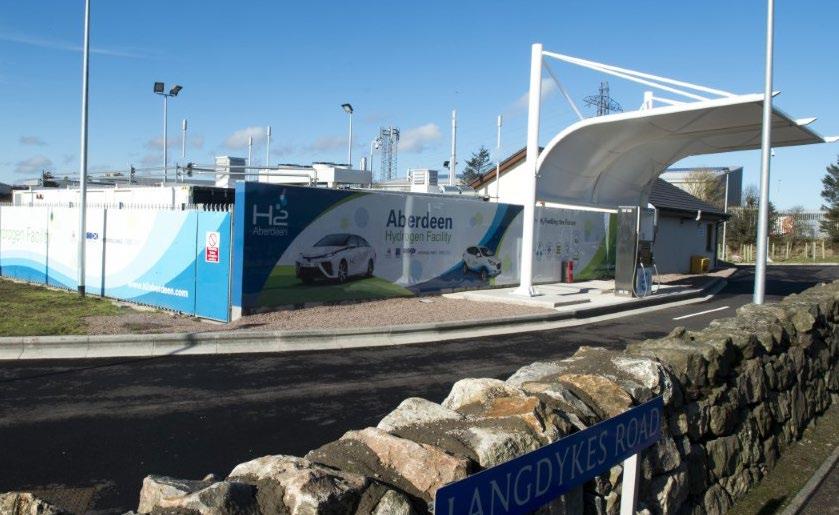
the wheels in motion which culminated with the deployment in March 2015 of Aberdeen’s first fleet of ten hydrogen fuel cell singledecker buses. A larger fleet of WrightBus double-decker hydrogen buses was deployed in 2021 which now provides routine hydrogen bus services across Aberdeen.
Aberdeen’s hydrogen vehicle fleet now includes fuel cell cars, vans, refuse trucks, and street sweepers. The fuel for these hydrogen vehicles is produced locally from renewable electricity by electrolysis of water at Kittybrewster and Altens with further production being established adjacent to Aberdeen Airport. Local companies including Hydrasun and Norco have been involved in the installation and maintenance of these hydrogen refuelling stations, making use of their experience with high pressure gases and compression systems.
The 15th annual Scottish Hydrogen and Fuel Cell Association conference takes place on Thursday 26th October 2023 at P&J Live in Aberdeen. The SHFCA2023 conference theme is Hydrogen Scotland – Realising the Potential which will highlight the critical importance of local supply chains and skills as a key part of the Just Transition. Hydrogen and fuel cells can help maximise the benefits to local communities from the deployment of local renewables, with local jobs adding value and economic impact.
Aberdeen’s hydrogen vehicle fleet now includes fuel cell cars, vans, refuse trucks, and street sweepers
There will be opportunities online and in person during the next few months for companies to find out more about the emerging hydrogen supply chain, starting with the OGV Live webcast in late August. Offshore Europe returns to P&J Live in Aberdeen in September and this year features the Energy Transition show-floor area with the series of Hydrogen Theatre presentations. This will give examples of hydrogen projects and activities in Aberdeen and across the UK together with future plans for scaling up offshore wind and hydrogen in the North Sea.
Hydrogen deployment in Aberdeen is now moving from demonstration projects to larger scale and wider deployment. The strategic partnership between Aberdeen City Council and bp provides the framework for transitioning to a local hydrogen supply chain with local initiatives including the Net Zero Technology Centre’s work with emerging hydrogen technologies, Hydrasun’s Hydrogen Training Academy, and the ETZ Ltd’s proposed Green Hydrogen Test & Demonstration Facilities in Altens.
The emerging hydrogen value chain can be summed up in the expression ‘Make it – Move it – Use it’ with all three activities needed to develop and deliver the hydrogen economy. These new hydrogen initiatives and facilities in Aberdeen will help local companies to identify and exploit opportunities to develop new services and products for the growing hydrogen market.
32 www.ogv.energy I August 2023 HYDROGEN & CCS
For more information visit www.shfca.org.uk
With 150+ Years’ of combined experience in flexible pipe engineering, we know how to design for high carbon applications. In challenging CCUS applications, we can assess the affects of permeated gasses on structural materials to ensure reliability.
Our Services Include:
» NDT Pipeline Inspection
» Pre-FEED & FEED Studies
» Technical Risk Assessment
» Project Feasibility & Design Support

» Design & Engineering
Tell us about your project:

support@theimpulsegroup.com

www.theimpulsegroup.com

Half Page - CCUS Advert.indd 1 24/07/2023 12:59:11
www.leyton.com
The UK’s largest innovation funding consultancy

Leyton is an international consulting firm that helps businesses leverage financial nondilutive incentives to accelerate their growth and achieve long lasting performance.


We simplify your access to these complex incentives. Our combined teams of highly skilled Tax and Technical specialists, enhanced with cutting-edge digital tools developed internally, maximise the financial benefits for any type of businesses.
With compliance always front of mind, we have been delivering optimal services for our clients for over 24 years. This provides peace of mind that you will always receive the maximum benefit, without taking risks.
HYDROGEN & CCS
Innovative routes to a sustainable future
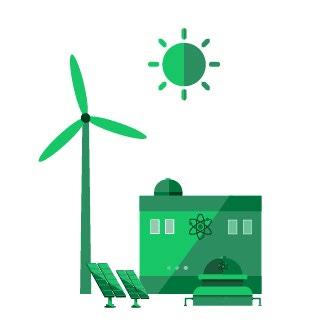
The drive for sustainable technologies has been fuelled in recent years, with efforts to de-carbonise industries through advancements in energy storage, hydrogen production and carbon capture & storage (CCS), to name a few, proving to be pivotal in achieving a net zero economy. Hydrogen in particular has been deemed as the most promising alternative to fossil fuel sources, and has a vast array of uses in sectors ranging from transport to heating. The UK Government has committed to a hydrogen strategy, which will support innovation in each segment of the hydrogen value chain: production, conversion, storage and transport. However, at present, there remains several key areas of uncertainty surrounding each of the above, with significant research being required to ensure the safe, efficient and cost effective integration of hydrogen in current infrastructures. Firstly, hydrogen itself can be produced in several ways, resulting grey, blue and green hydrogen.
Grey Hydrogen
The majority of hydrogen production is currently grey, whereby hydrogen is produced via the steam reforming of natural gas, however the carbon containing compounds are emitted as greenhouse gases. In this case, the production of hydrogen itself is therefore a major contributor to greenhouse gas emissions, thus in order for hydrogen to be truly ‘green’, it must be produced from renewable resources.

Blue Hydrogen
Known as ‘low carbon’ or CCS-enabled hydrogen. This form can be produced via the steam reforming of natural gas, during which both hydrogen and carbon containing compounds are formed. The captured carbon materials are then captured and stored for future use via innovative technologies, thus limiting the overall emissions of the process. Manufacturing CCSenabled hydrogen at scale will play a pivotal role in reducing global CO2 emissions, thus aiding the effort to achieve net-zero emissions.

Green Hydrogen
This form of hydrogen is carbon free, and involves the splitting of water into its constituent elements: hydrogen and oxygen; using electricity generated from renewable sources. Electrolytic water splitting provides a clean and efficient route to sustainably producing hydrogen, however, there are various challenges currently faced in the industry which require extensive research efforts in order to overcome. Most commonly, ensuring the efficiency and cost effectiveness of the electrolyser itself in comparison to current state-of-the-art fossil fuel based systems remains an active area of research.

Further to the production of hydrogen, the integration of the high purity, yet explosive gas, into existing infrastructures requires substantial R&D efforts in order to push the boundaries of innovation and advance the overall field to ensure a global hydrogen economy.
Leyton offer support in the form of R&D tax relief incentives to help companies achieve their ambitious goals, with the aim of accelerating progress in the renewables sector. To date, Leyton have helped businesses in the biofuel, oil and gas, and offshore wind industries, amongst various others, gain funding which they can they re-invest in future projects.
www.ogv.energy I August 2023
BY For more information visit: leyton.com
SPONSORED
34 OUR DIGITAL INDUSTRY
SPONSORED BY
www.sword-group.com


Euan Macalister is Digital Sales Director at Sword UK with 20+ years’ experience in the Technology and Energy industries. Euan has worked across the world with various operating companies, getting to grips with their challenges and recommending innovative solutions. At Sword, he focuses on helping Energy organisations to solve their toughest data challenges.

TAILORING TECHNOLOGY WITH DATA DRIVEN SOLUTIONS
Can technology investment be a golden ticket?
Accessing real-time, reliable data to inform decision making is at the heart of many of the Energy sector’s technology investments. Addressing internal and external challenges often boils down to a focus on using technology to reduce costs, reduce health and safety risks, increase throughput, and fast-track the journey to net zero.
Many also face common internal challenges that come with growth. Inheriting ageing infrastructure to acquiring different systems, of various ages, that span multiple sites, assets, and locations. Pressure on ensuring data is configured for integration with internal and external systems is also increasing, as regulatory guidance requires industry collaboration and modernisation.
As new technologies enable the digitalisation of legacy information and modernise current data collection methods, Energy organisations are being offered a myriad of solutions on how best to integrate engineering and operational data.
Technology may appear to offer the golden ticket to enabling data driven decisions. However, to keep pace with the competition and unlock efficiencies in business processes, it can be costly. A great piece of tech may not be the best fit for the environment or challenges in your organisation. Equally, if implementation is not executed effectively, then capital investment can feel wasted if a new technology is underutilised and not delivering the cost savings anticipated.
Intelligent solutions
asset. This is only valuable if the data has been through a process of rationalisation and standardisation to ensure it can be readily accessed and is trusted.
Each organisation’s growth journey and operating environment brings a unique set of challenges. There are however a number of common denominators across our Energy sector such as the desire to enable data driven decisions by replacing localised solutions with cloud-based central solutions and the need to replace aging systems across multiple areas; and connecting disparate data from multiple sources.
Build or buy?
The industry often wrestles with the decision to build or buy software. The answer is really both, and a hybrid approach is often the best option. Organisations such as Microsoft enable access to reliable cloudbased tools that can be used to create bespoke solutions that accelerate an organisation’s digital maturity and take advantage of advances in technology around existing embedded processes.
Addressing challenges often boils down to focus on using technology to fast-track the journey to net zero
We often work with customers using a ‘low-code’ software development approach, which aims to optimise the development process to accelerate delivery. Some of our most significant digital transformation projects have utilised Microsoft’s development solution, Power Platform.
Unlock the power of data
We are regularly asked to help overcome frustrations with technology underperforming in line with expectations. It is often the case that the technology is not the cause of the frustration, it’s the data that the technology is accessing.
Combining our experience in data and applications over the years, has driven our ability to build an industry recognised Master Data Model (MDM) which has been designed ‘by engineers for engineers.’ In digital engineering the MDM acts as a single source of truth and the foundational building block data sits on when exploring digital twin solutions.
Our MDM and software modules have been used to help deliver multiple global projects and validated across 30 countries and with the involvement of operators and EPCs for greenfield and brownfield initiatives.
Digitising legacy information

We avoid the ‘garbage in, garbage out’ trap by ensuring the right data is collected, structured and accessible to make informed business decisions. We develop bespoke applications to integrate with all aspects of a business when off-the-shelf software solutions don’t quite fix a customer’s precise problem, from legacy issues bringing unwelcome risk into operations, to inefficient processes making everyday tasks complicated or prone to human error.
Enabling a Data Driven future
We now see organisations focusing on becoming data driven to better access engineering information. They are also exploring intelligent solutions to turn their data into a powerful, trusted, and valuable
Sword recently worked with an Oil and Gas operator’s offshore teams to replace multiple systems for data entry and paper-based processes. Cumbersome, legacy applications were superseded by easy-to-use, mobilefriendly applications for the likes of instrument reading, observations, and maintenance planning. The results included greatly improved efficiency and enhanced system integration, both offshore and onshore and all on a single enterprise platform.
Investing in tailored, solid technology systems that are fit-for-purpose is proving to be the key for many Energy industry organisations in building data driven foundations. Insights and analytics from these reliable systems enable informed data driven decisions to be made on everything from recruitment investment to pinpoint precise drilling locations. Enabling our customers to rely on their data as a single source of truth is the cornerstone to building strong data foundations.
About Sword: As the North Sea’s largest provider of Data and Digital services, Sword focuses on solving the industry’s most critical business challenges by enabling our clients to capture, manage and utilise data to make informed decisions. This is supported by technology adoption and people engagement, together with modern ways of working to give confidence that the right decision is made every time
For more information, visit www.sword-group.com
35
INNOVATION & TECH
Euan Macalister
www.renewableuk.com
POLLING SHOWS OVERWHELMING SUPPORT FOR GRASPING THE INDUSTRIAL AND ECONOMIC BENEFITS OF RENEWABLES.
 By Nathan Bennett, Director of Communications, RenewableUK
By Nathan Bennett, Director of Communications, RenewableUK
The latest polling by Opinium has shown that the British public are overwhelmingly in support of the roll out of renewable energy, the growth of green industry and net zero. This comes at a time in which the opportunity to secure investment in renewable energy sector manufacturing has never been higher, and the competition for it fiercer. More specifically the British public:

• Want the Prime Minister to go further on renewable energy roll out, green growth and decarbonisation.
• Not only are policies to grow green industries like offshore wind as popular as the Prime Minister’s ‘top 5 priorities’ (in some cases more so), but a far greater proportion of voters believe they’re achievable and deliverable.
• The public see renewable energy and other green industries as more likely to drive economic growth outside of London and the South East than any of the Chancellor’s other ‘priority sectors’ of the economy – giving the sector a greater appeal to those areas.
• A much greater proportion of the UK public want the Government to focus on investment in wind energy than fossil fuels.
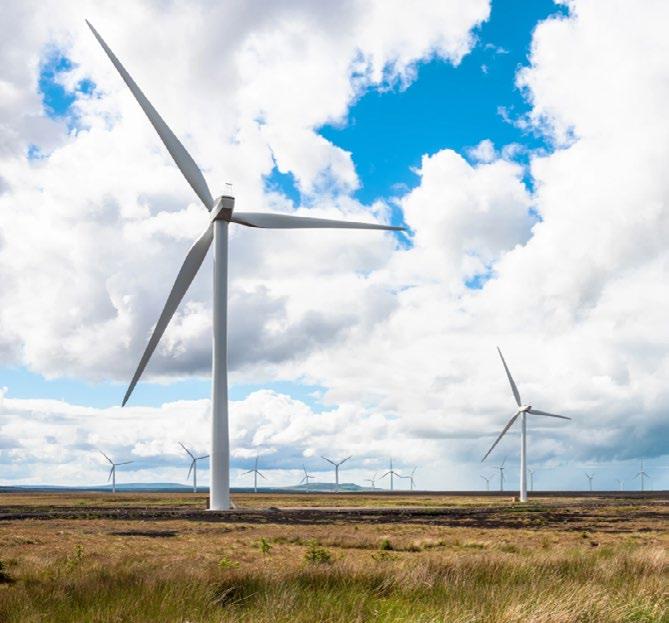
The Prime Minister needs to listen to the people of Britain, because they’re right. In addition to analysing the polling, this blog will outline the economic opportunity presented by the renewables sector and the popular policies the Chancellor could take forward to assure the UK grasps them – and that the manufacturing opportunity isn’t lost to competitor nations.
First, there are far more current voters think the Conservative voters who think

RenewableUK members are enabling a just transtion to a net zero future. Focusing on continuous improvement around the three pillars of our Just Transition Tracker - People, Place and Planet These inspiring companies are a true showcase of the best that our industry has to offer.


the Government could do more on climate change, renewables and the green economy than currently Conservative voters who think the Government ‘have gone too far’.
Members of Parliament should not mistake one community’s opinion on the ‘Ultra Low Emissions Zone’ as an UK-wide allencompassing referendum on what everyone thinks about net zero, green technologies and the roll out of renewable energy.
The latest polling shows:
• There are far more current Conservative voters who think the Government could do more on climate change, renewables and the green economy than currently Conservative voters who think the Government ‘gone too far’.
• Voters at large are even more likely to believe that the Government have ‘not gone far enough’, with concern highest in voters who are currently planning to switch their vote from Conservative to Labour at the next election. 67% of Conservative to Labour ‘switchers’ think the Prime Minister hasn’t gone far enough in increasing the use of renewable energy and 57% think he hasn’t done enough to tackle climate change or grow the green economy.
Similarly, there are considerably more voters who would have a more favourable view of the Conservative party if they were to increase investment in renewables, than voters who would have less favourable view – and that’s even when you prompt people to think about that investment in the context of everything else Government could be spending money on.
Over a third of Conservative to Labour ‘switchers’ would warm towards the Conservative party if they increased investment in renewables.
Question 1: Which of the following do you think best describes Rishi Sunak and the Conservative government’s approach to the following?
Question 2: Please imagine that the conservative party promises to increase the level of investment in renewable energy and green industries. Thinking about all the government's spending priorities, will this make you feel...?
36 www.ogv.energy I August 2023
CORPORATE PARTNER
RENEWABLES
As this point, it’s worth reminding you all of some of the key benefits of renewables which are making the sector so popular:
Renewables are the lowest cost means of generating new electricity for billpayers and UK businesses – even now, with global inflationary costs and supply chain pressures increasing the costs of all new infrastructure projects.
Jobs in the green economy are, on average 1.7 times more productive than the national average, and pay significantly more (£42,600 pa vs £33,400)
Renewable energy is a huge driver of new jobs and private investment into the UK. Reaching the Govt's target of 50GW of offshore wind by 2030 will require an average of £17bn of private investment into the UK each year of this decade, and it is expected that the sector will generate over 100,000 jobs by 2030.
Important to note for our next set of polling, the jobs and investment that flows from renewable energy and green technologies is widely dispersed across the UK.
Above all other priority sectors of the economy, renewable energy and other green industries are seen as most likely to drive jobs and investment into areas of the UK outside of London and the South East.
At the start of this year, the Chancellor outlined a number of sectors of the economy which he would prioritise for growth and investment. If you poll each of these sectors against each other – a far greater proportion of the public believe renewable energy and other green industries will drive jobs and investment into areas of the UK outside of London and the South East than any other key sector. Again, this is particularly high amongst Conservative to Labour switchers.
Not only are policies which support the development of the renewable energy sector as popular as the Prime Minister’s five goals, but they’re seen as far more achievable and deliverable.
This is the critical polling from the sector’s perspective. To understand why, you have to know the context.

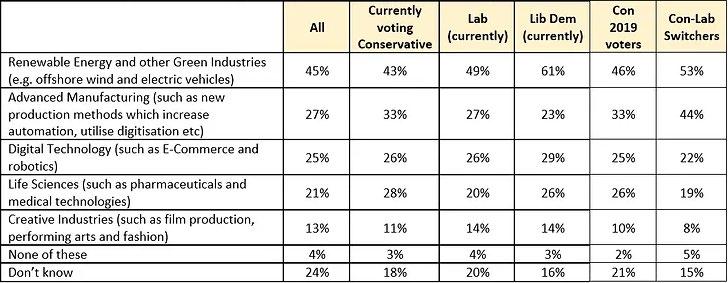
Global renewable energy ambitions, and the pipeline of planned developments, have increased enormously in recent years. As a result, there is going to have to be a significant increase in renewable energy manufacturing and wider supply chain investment in the next couple of years. For example, meeting Europe’s collective ambitions of 165GW of offshore wind by 2030 alone will require:
• Double the number of turbine factories to deliver 1,300 turbines each year.
• Four times as many fixed bottom foundation manufacturing facilities.

• Up to 10 times as many factories producing floating foundations.
Question 3: Which one of the following industries is more likely to drive job and investment into areas of the UK outside of London and the South East?

This public perception is founded on a reality. Both the renewable energy sector and the green economy at large are incredibly effective at driving growth across the UK.
Question 4: Do you think a growing UK renewable energy sector would have a positive or negative effect on the following or will it make little difference either way?
37
Net
RENEWABLES Article continues at www.blog.renewableuk.com Or simply scan the QR code to go straight there!
UK
Zero Economic Hotspots
CONTRACT AWARDS
SPONSORED BY
Infinity Partnership: Your Partner in Business

Infinity Partnership is an award-winning, multi-disciplinary accountancy and business advisory practice, with a proactive approach to customer service.

www.infinity-partnership.com
Odfjell Drilling strengthens ties with Equinor and confirms two rig deals
Norwegian offshore drilling contractor Odfjell Drilling has inked contracts related to two letters of intent (LOIs), which were received earlier this year for one of its semisubmersible rigs to carry out drilling activities in the North Sea. In addition, the rig owner also entered into a strategic collaboration agreement with Equinor.
This agreement is expected to provide the framework for a joint effort and longer-term collaboration with a focus on safety, drilling efficiency, and lower emissions. According to Odfjell Drilling, it has also signed with Equinor contracts provided for in the two letters of intent from March 2023 for the Deepsea Atlantic semisubmersible rig to conduct operations in the North Sea region.

These contracts have a combined firm duration of 23 months and a value of approximately $290 million, excluding integrated services, upgrades/ modifications or mobilisation fees. The contracts
Petrofac wins multi-million deal for FPSO recently sold by BW Offshore off Africa
TechnipFMC has landed a contract worth up to $250 million for work on TotalEnergies' Girassol field in Block 17 offshore Angola where production has just been shut-in on its Dalia field for maintenance work to be carried out.

Oilfield services provider Petrofac has secured an integrated services contract with CNR International (CNRI) for a floating, production, storage, and offloading (FPSO) vessel, which is working offshore the Ivory Coast, West Africa.
According to Petrofac, the initial three-year, multi-million pound, contract will enable its Asset Solutions business to provide integrated services for the FPSO Espoir Ivoirien, which BW Offshore sold in June 2023 for a total consideration of $20 million.
Following the sale of the vessel to CNRI, around 110 personnel currently supporting the FPSO,
Infinity has been a five-time winner at the British Accountancy Awards and has been a three-time finalist at the Scottish Accountancy Awards in recent times.
also include provisions for performance bonuses and fuel incentives.
Aside from the firm contract periods, there are four priced one-well options as well as three further optional periods of approximately one year each, with the rates for each period to be mutually agreed prior to exercising the options.
Furthermore, the work will start immediately following the completion of the special periodic survey for the Deepsea Atlantic rig, which is currently planned for the first half of 2024. Thanks to these deals, the rig is now signed up for firm contracts until mid-2026, with options that could extend the rig’s assignment to 2029.
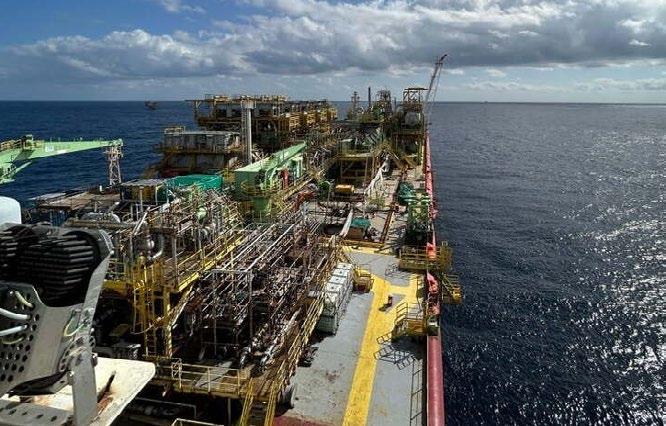
Currently, the rig is working for Equinor thanks to a letter of intent, which was awarded in July 2022 for the drilling of 12 wells, as part of Phase 2 of the Johan Sverdrup field development in Norway. In November 2022, the Norwegian state-owned oil and gas player extended the rig’s stay offshore Norway until the first quarter of 2024 with five additional wells on the Johan Sverdrup Phase 2 development.
Kjetil Gjersdal, Chief Executive Officer of Odfjell Drilling, commented: “We are pleased to confirm that the Deepsea Atlantic will continue to work
including those onshore and on the vessel, will transition to Petrofac from BW Offshore and the transition of people and operatorship is expected to complete before the end of July.
The company underlines that this contract builds upon its existing relationship with CNRI in the UKCS, which has centred around the provision of operations and maintenance services. The deal will be managed from Petrofac’s technical hub in Aberdeen.
Nick Shorten, Chief Operating Officer for Petrofac’s Asset Solutions business, commented: “I’m delighted that we are continuing to grow our presence in Africa with this latest contract from CNRI. We bring our considerable global FPSO experience to the Ivory Coast, adding to our portfolio of service contracts in Africa.
“Petrofac is expanding across the continent, providing local jobs, developing local skills, and collaborating with local partners. We look forward to deploying our expertise and working collaboratively with CNRI and our new employees to effect a safe and seamless transition through to operation of the asset.”
with Equinor under the new contract which could see the rig in continuous operation until 2029, delivering strong, predictable cash generation from the unit.
“Having worked with Equinor on many project developments through the years, we are pleased to have signed a strategic collaboration agreement to further develop our combined capabilities to deliver safe and efficient operations. Continuous development of our workflows and technologies is a key focus for Odfjell Drilling and we look forward to seeing the results of this initiative.”
The 2009-built Deepsea Atlantic is a sixthgeneration deepwater and harsh environment semi-submersible, dual derrick, dynamicpositioned rig of enhanced GVA 7500 design.
The FPSO works on the CNR Internationaloperated Espoir field off the Ivory Coast and has an oil production capacity of 45,000 bbl/d. The production at the field started in 2002 while the oil produced from the Espoir East and West reservoir is processed, stored, and offloaded from the FPSO located between the two wellhead towers.
This latest award builds on Petrofac’s contract successes achieved throughout 2022, including decommissioning in Mauritania for Tullow Oil, operations and maintenance for Tullow Oil in Ghana, and the provision of offshore operations services for BP’s Greater Tortue Ahmeyim (GTA) project, including an FPSO, in Mauritania and Senegal.
www.ogv.energy I August 2023 38
Valaris adds five more deals worth $150m to backlog
Offshore drilling company Valaris has raked in new contracts for three of its rigs worth around $150m.

Valaris said that it won two deals for one of its semi-submersibles while the remaining three deals were for two jack-up drilling rigs. The company received a two-well contract with Anadarko Petroleum, a wholly owned subsidiary of Occidental, for the Valaris DPS-5 semisub. The contract is expected to begin in July 2023 in the U.S. Gulf of Mexico and has a minimum duration of 60 days. The total contract value is approximately $22 million.
According to the most recent fleet status report, the rig will complete work for Eni during July offshore Mexico. It started work for the Italian major in January this year on a $313,500 per day deal with an additional $1.2m mobilisation fee.
Sparrows Group expands Middle East operations with $13million contract win
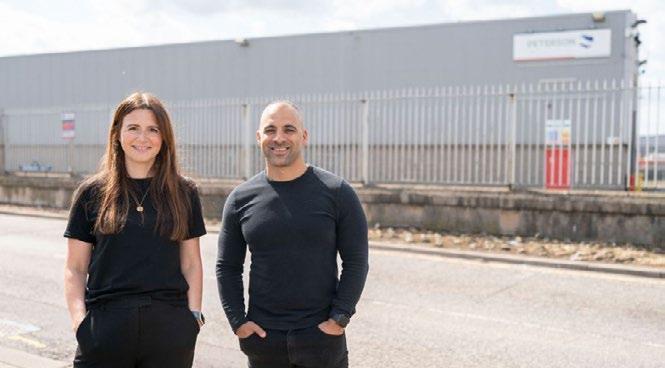
Sparrows Group (Sparrows), the engineering and maintenance services specialist for the global energy and industrial sectors, has been awarded a major crane replacement contract for a client in the Middle East.

The project, which is worth $13million (USD), is expected to last 18 months.

The scope of work will see Sparrows complete all aspects of the engineering required to replace four BOS Liebherr cranes of four offshore platforms, which are beyond their expected operational life. Sparrows will handle all crane interfaces,
STC INSISO secures contract as technology development partner for Peterson Energy Logistics
Aberdeen-headquartered, STC INSISO has announced a technology partnership with international logistics and supply chain company, Peterson Energy Logistics.
The Valaris DPS-5 won one more contract – a nine-wells plug and abandonment campaign with Apache in the U.S. Gulf of Mexico. The contract is expected to begin in September 2023 right after the deal with Anadarko and has a minimum duration of 110 days.
The Valaris 107 jack-up also bagged a brace of deals. It won a deal which will last 180 days at the least with an undisclosed operator offshore Australia. The rig will start work in the first quarter of 2024 on a $150,000 operating day rate. The second contract is for one year with another unnamed Australian company. The contract is set to start in October 2024.
installation, commissioning and testing, as well as engineered lift plans for the removal and installation of the cranes using a lift barge, which is to be supplied by the main contractor, along with the new cranes. The project will be carried out in two phases, with phase one taking place onshore from the company’s Abu Dhabi facility and workshop and phase two offshore.
Charlie Topp, Regional Director – Middle East, India, Caspian and Asia Pacific at Sparrows: “This is a significant contract win for us. We’ve got an extensive track record in the Middle East, and this contract reflects the confidence of operators and contractors in the region to utilise our expertise as part of safety critical work. As cranes age, it’s vital that maintenance is done to prolong their life, but in instances like this, where ongoing and frequent maintenance is impacting operations, it’s crucial that new infrastructure is deployed.”
The scope of work for the software experts at STC INSISO throughout the contract, will primarily involve supporting Peterson Energy Logistics with the next phase of development for their logistics technology, Lighthouse.
Developed by Peterson Energy Logistics, Lighthouse is a suite of integrated applications for the logistics market. Built on decades of industry experience, Lighthouse provides digital assurance and visibility to clients throughout the entire lifecycle of the cargo demand process. As a leading provider of risk control and assurance software and services, STC INSISO will develop the applications that form part of the Lighthouse suite and the architecture of the software.
Jaye Deighton, Projects and Innovation Director at Peterson Energy Logistics said: “We look forward to working with STC INSISO and utilising the team’s expertise and proven track record in improving operational efficiency through
The rig is already offshore Australia working for a company which remained anonymous in Valaris’ fleet status report. The work will be wrapped up in August but will be followed by a contract with Beach Energy offshore New Zealand until December 2023. The Beach Energy deal is supposed to bring in $26m for the company.
The last contract awarded to Valaris was for the Valaris 247 jack-up. It is a two-well deal with a “major Australian operator” which is expected to begin in early to mid-2024. It has an estimated duration of 100 days. The company stated that the operating day rate was $180,000 and that it would receive a mobilisation and demobilisation fee that covers operating costs while the rig is in transit.
The Valaris 247 is currently busy offshore the UK. It started work with Perenco in March and it is expected to finish its work in September. Perenco does have one option with an estimated duration of 60 days. It is worth noting that contract backlog excludes lump sum payments such as mobilisation fees and capital reimbursements.
While Sparrows will undertake the majority of the scope of work, it has employed a trusted and local partner to undertake structural fabrication, electrical work, public address and general alarm systems, fire and gas systems and telecoms, as part of the full scope of work.
the development of digital applications. This new partnership will support the evolution and continual improvement of Lighthouse, ensuring the application remains ready to support our clients as we move together through the energy transition and beyond into a greener, more sustainable future.”

STC INSISO’s Chief Technology Officer, Arrash Nekonam, said “We are excited to be working with Peterson on these large-scale technology projects as it aligns perfectly with the direction of our business. We have worked with Peterson in the past, but this new partnership agreement is a hugely positive step where Peterson will now be utilising several of the products and services that we have to offer.
“Despite the close proximity of STC INSISO and Peterson’s Aberdeen offices, together we look forward to delivering solutions to stakeholders globally.”
39 CONTRACT AWARDS SPONSORED BY
CONTRACT
AWARDS
www.normanbroadbent.com



We have a simple and straightforward objective: to help our clients manage and successfully drive change, mitigate risk, grow, and succeed.
John Begley
To feature new senior hires and appointments within your organisation, please contact Jordan Clarke, Head of Marketing & BD at Norman Broadbent. +44 (0) 7912 564 797 / jordan.clarke@normanbroadbent.com
John is a Managing Director for Norman Broadbent Group and leads our Industrial Practice. He has over 20 years’ experience across executive search, research & insight, and leadership advisory (leadership development, psychometric evaluation, and leadership assessment).
During his career, John has worked with business leadership teams across the US, EMEA and more recently the Asia Pacific region, primarily in the Industrials space. John works closely with companies of all sizes and ownership structures including pre-revenue start-ups, private equity-backed, privately, and publicly owned, AIM listed, and International PLCs. Besides his strong background in executive search, John has pioneered the use of leadership advisory services around succession planning, and the on-boarding of senior and high potential future leaders.
Global Underwater Hub (GUH), the leading trade and development body
Ricci Boston, who will be based in Newcastle, will be instrumental in increasing engagement among GUH's members and expanding its membership base in the north of England. He will also be responsible for developing strategic relationships across the region whilst driving GUH’s growth and initiatives for the underwater sectors.
Prior to his appointment at GUH, Ricci was Director of Strategy and Client Engagement for a major provider of engineering and management services to the energy industry. Over the last decade, Ricci has successfully managed bids, mobilised and project managed large revenue projects in the oil & gas, power generation, renewable energy, construction and engineering sectors.
As a UK-wide organisation, GUH has member companies located across the country. Ricci will be responsible for supporting those business in the north of England, in an area stretching from the Mersey in the west to The Humber in the east and north to the Scottish border. The organisation’s goal is to accelerate the delivery of a step change in the development and internationalisation of underwater technologies and deliver exponential growth in the industry.
GUH, which transitioned from Subsea UK in 2021, already has a well-established Scottish base in Aberdeen and will open a Newcastle office in late summer, followed by a base in Bristol later in the year. Refurbishment work is well advanced at the new premises in Newcastle’s Walker area, with completion expected in mid-July.
New global business manager drives energy transition growth for DTI
UK-headquartered downhole technology specialist, DTI, has strengthened its management team with the appointment of a new global business development manager for energy transition technologies, to support strategic growth plans.
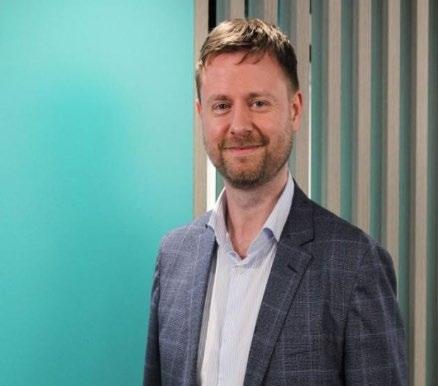


Matthew Gray, who took on the role at DTI this month (June), has more than 20 years’ experience within the energy sector, specialising in well completion, intervention, testing and abandonment. He will grow emerging product lines, initially for hydrogen and carbon capture applications and shape a new business division by catalysing new sector opportunities and relationships.
Based at the company’s Aberdeen office, Mr Gray joins DTI from TEXO Group where he held the role of Head of Business Development, responsible for eight divisions, reporting to the group board. Prior to this he worked in similar roles at Franks International, TIW, Enventure and Archer Oiltools after starting his career in technical wireline and MWD services at Halliburton and Schlumberger.
Part of the FrontRow Energy Technology Group, DTI holds around 14 patents or patents pending for innovative and world-first technologies and offers around 10,000 products for a range of well lifecycle applications. These include completions, workovers and EOR; well access and deployment; flow control; measurement, logging and testing; retrieval and cleanout and well abandonment. The company’s products have been qualified and deployed in harsh pressure, temperature and corrosive environments so are highly transferable to wider energy sectors and the company’s inhouse design and manufacturing team are able to create new or bespoke solutions tailored to specific challenges.
appoints new Chief Financial Officer
ASCO, the global integrated logistics and materials management company, has appointed Tony Wright as its new Group Chief Financial Officer (CFO), effective from the 1st of July, following the retirement of Gary Paver.

Tony is an experienced financial professional with over 25 years of expertise in senior roles within the energy and construction sectors across the UK, Middle East, South East Asia and Africa. Most recently, Tony was Executive Director and Group CFO of Lamprell PLC, a prominent energy construction and fabrication company based in the United Arab Emirates (UAE).
Commenting on his appointment, Tony said:
“I am pleased to join ASCO at such an exciting time, a company that actively promotes the energy transition and prioritises environmental, social, and governance (ESG) considerations. ASCO has a strong reputation, and I firmly believe it is well positioned to take advantage of the opportunities in both its current and emerging markets."
Peter France, ASCO's Group CEO, said: “It has been my pleasure to work closely with Gary over the last three years, and I would like to take this opportunity to thank him for his contribution to the growth of ASCO during this period.
"Tony's extensive financial background and proven industry track record makes him a valuable asset to our team as we continue to strengthen the business and support the energy transition.”
40
John Begley
BY
SPONSORED
ON THE MOVE
2 1
3
4


Managing Director, Mike Pettigrew, to replace Peter France as CEO
Global integrated logistics and materials management specialists, ASCO, has appointed Mike Pettigrew as its new CEO.
Formerly UK managing director, Mike Pettigrew will replace out-going CEO, Peter France, this October.
Mike Pettigrew joined ASCO in March 2022 as general manager for the group’s AFM and Seletar businesses and was appointed UK managing director last November.

With extensive experience across the energy, marine, industrial power and ship building sectors, Mike Pettigrew spent 13 years with Babcock International before joining ASCO. He was also a non-executive director of Decom North Sea.
Commenting on his appointment, Mike Pettigrew said: “I look forward to working with Peter over the next couple of months to ensure a smooth transition, before taking up the role of CEO. This is an exciting period for ASCO as we continue to build our portfolio of services amid the energy transition. Working closely with the board of directors, I aim to deliver our strategy and further strengthen our leading position in the sector.”
ASCO chairman, Bob Keiller, added: “As a business committed to developing its people, we are excited to see Mike take on the role of CEO"
The Offshore Wind Growth Partnership (OWGP) appointed three new non-executive directors to its Board to help guide its £100 million offshore wind supply chain development programme in the UK.
The new board members – Tim Pick, Isobel Sheldon OBE and Professor Simon Weeks –bring decades of experience across several strategically important sectors including offshore wind, energy, battery research and development, electric vehicles, and aerospace. Current OWGP Board Chair Martin Whitmarsh and Director Stephen Burgin will retire from the Board at the end of July.
OWGP Programme Director Anil Sayhan said: “We are immensely grateful to Martin and Stephen for their guidance over the last four years. Under their leadership, OWGP has established itself as the UK’s flagship growth funding and business support organisation dedicated to offshore wind. I also would like to congratulate Tim, Isobel and Simon on their appointments as we get ready to take OWGP to its next phase of growth.”
Tim Pick, outgoing Offshore Wind Champion, said: “Since my former role as Offshore Wind Champion, I’ve become a passionate advocate for the offshore wind sector as it continues its evolution from a niche activity to a core
5 6
AISUS appoints Barry Marshall as General Manager

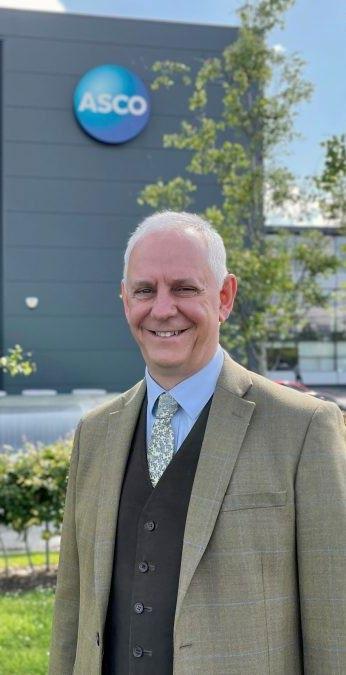
The company has achieved remarkable milestones with the development of new technologies and a robust data management platform.
component of the UK’s future energy system. I’m excited to help unlock the opportunities of this high-growth sector for UK supply chain companies, who are well-placed to make the most of our engineering and industrial heritage right across the country.”
Isobel Sheldon OBE said: “I’ve been passionate about climate and sustainability from a very young age, having devoted much of my career to helping UK Companies use green electrons to power transportation. I’m very excited to apply my business development experience to help bring new players into the supply of green electrons through offshore wind, an area the UK can lead the way in.”

Professor Simon Weeks said: “Having been involved in the UK’s strategically important aerospace sector for many years, I’m delighted to help the UK take its next steps in the development of offshore wind. I’m excited to help the UK to take full advantage of the opportunities ahead, ensuring UK expertise, companies and communities can benefit from the growth of this clean energy source.”
These innovative technologies, including external crawler based inspection, digital x-ray and Gemini, a cloud-based advanced reporting system, complement their existing reputation as industry leaders in splash zone inspections. With a team of highly experienced inspection and data specialists, AISUS have positioned themselves for international growth and the further development of AI and machine learning technologies.
Barry has been an integral part of the AISUS success story and has demonstrated exceptional leadership and competence throughout his journey at the company. Barry’s deep understanding of the business, combined with his strategic vision, makes him the ideal candidate to lead AISUS into its next phase of growth.
"We are thrilled to have Barry take on this new responsibility. His track record of success within our organisation and his broad understanding of our industry makes him the perfect fit for the position” , Graeme McNay, CEO, Valor Energy Group.

41 ON THE MOVE
Content provided by Norman Broadbent
www.wellsafesolutions.com


SAFE, SMART & EFFICIENT
The complete package for well decommissioning
Well-Safe Solutions provides a ground-breaking approach to the safe and cost-efficient decommissioning of on and offshore wells. We offer a specialist well abandonment service that allows operators to meet the challenges and regulatory imperatives around decommissioning, while significantly reducing costs.
£750,000 Aberdeen expansion for decommissioning specialist
Phoenix Decom is based in the city and has strategically located licensed operational quayside outlets at the ports in Aberdeen, Peterhead, and Lerwick. Now, the growing company has taken on 3400m² fully licensed premises at Wellheads Crescent in Dyce where £600,000 of the investment figure lies in additional equipment and infrastructure such as cleaning capabilities which will uplevel the service offering as the company embraces a steep upward growth trajectory.
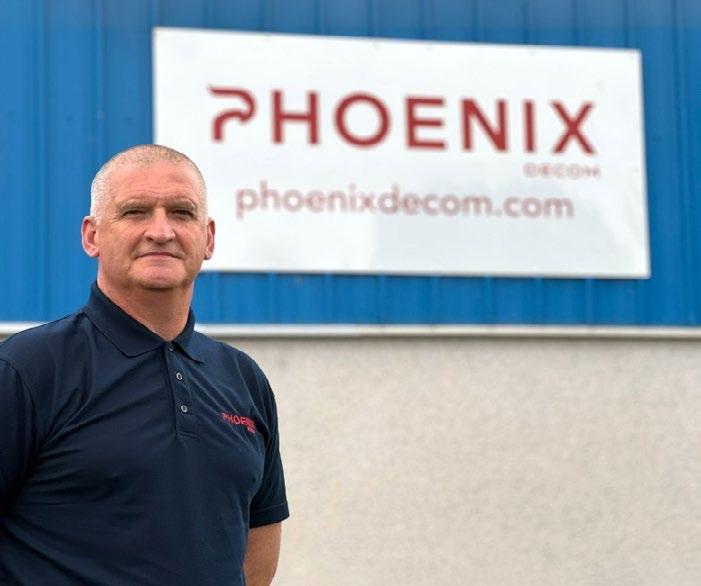
Despite its youth, the ambitious company has flourished to become the leading one-stop shop for independent, modern, integrated solutions for the management and disposal of decommissioning waste in the subsea sector. The business prides itself on offering a fresh contemporary approach, and achieves dynamic, tangible and environmentally compliant outcomes for all clients and on all projects.
Commenting on Phoenix Decom’s expansion in Aberdeen, Craig Smith said:
A leading light in the decommissioning waste sector has invested £750,000 in significant expansion of its presence in Aberdeen.
Set up during the pandemic by respected industry leader Craig Smith, Phoenix Decom comprises a knowledgeable team of 15 trusted industry professionals who have collective experience of more than 200 years. That number is set to rise in the coming months as contracts won in the first half of the year put the company on track to exceed the previously reported £3 million of work won during its first year in business.
“In order to capitalise on the opportunities in our sector, it is vital that we are correctly positioned. The addition of the Dyce facility will place us near to our growing customer base whilst acting as both a central base and a springboard towards future growth.” in September 2022.
UK's Well-Safe Solutions Eyes Lucrative Australian Offshore Decommissioning Market
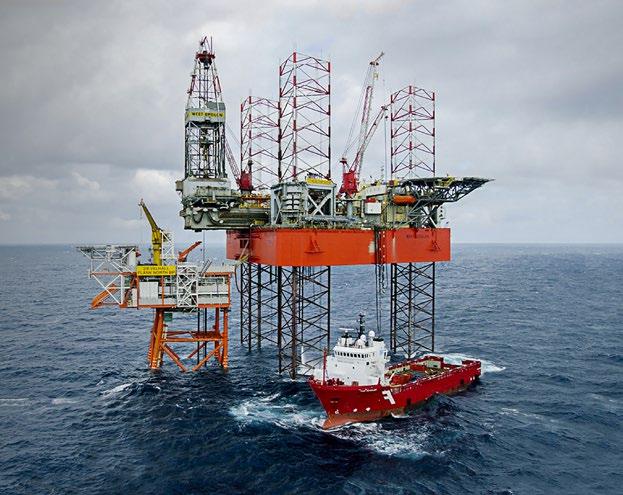
UK-based offshore well plug and abandonment company Well-Safe Solutions, best known for its services in the UK North Sea, is expanding into the Asia Pacific region with the appointment of Massimo Delia as General Manager of newly-created Well-Safe Solutions Pty Ltd.
Delia, based in Perth, Western Australia, joins Well-Safe Solutions with over 20 years of subsea commercial and engineering experience in a variety of strategic and managerial positions.
Well-Safe Solutions has cited Centre of Decommissioning Australia's (CODA's) initial assessment of Australia’s offshore oil and gas decommissioning liability, which has identified more than A$50bn of work ahead – with well plug and abandonment and pipeline removal the majority of estimated spend.

This includes the abandonment of over 1,000 offshore wells, in addition to a significant onshore decommissioning market.
Delia said: “I have watched Well-Safe Solutions go from strength to strength in Europe, with the growth of its Subsurface and Well Engineering team capabilities and the mobilisation of all three well plug and abandonment assets for the first
time in the company’s history just some of the recent highlights.
“I am eager to play my part in the next chapter of the company’s growth and look forward to collaborating with my colleagues, clients and stakeholders in the UK and Australia.”

Phil Milton, Chief Executive Officer of Well-Safe Solutions, added: “Working in tandem with the wider Well-Safe Solutions team, Massimo will be instrumental in leveraging our capabilities and track record to partner with operators and stakeholders throughout Australia and Asia.
“We’re looking forward to undertaking offshore and onshore well decommissioning projects with the input of the highly experienced engineering sector and supply chain already present within the region.
“Massimo’s appointment is a reflection of Well-Safe Solutions’ ambitious growth strategy. Well-Safe Solutions is the first Tier 1 company to offer the complete well plug and abandonment capability under one roof – from front-end engineering and design, through to project delivery, specialist engineering support, and close out.”
"With over 400 wells worldwide featuring Well-Safe Solutions’ engineering expertise and 70+ wells either decommissioned or to be decommissioned by the business in the North Sea alone, the company is well-placed to deliver on its mission to provide safe, efficient and collaborative well plug and abandonment operations," Well-Safe Solutions said.
Earlier in 2023, Well-Safe Solutions announced that all three well P&A assets - the Well-Safe Guardian, Well-Safe Protector, and Well-Safe Defender – were all committed to firm contracts before options until at least mid-2024.
www.ogv.energy I August 2023 42 DECOMMISSIONING
Read more here
BY
SPONSORED
Decommissioning bond to be in place soon, Viking liaison meeting told
A £40 MILLION decommissioning bond for the Viking Energy wind farm is likely to be in place soon, according to the council’s director of development service.

Neil Grant was responding to a question asked at last night’s (24-07-2023) meeting of the Viking community liaison group.
The lack of a decommissioning bond for the 103-turbine wind farm has been a bone of contention ever since construction started in summer of 2020.
The wind farm’s planning consent states that no work on site should start until a decommission bond had been signed off.
A decommissioning bond is required to be in place for large energy projects to ensure sufficient funds are in place to allow decommissioning and restoration of the site at the end of the development’s life.
Back in November 2020, Grant said he did not feel the council negotiating position had been weakened or undermined by allowing construction to commence before such a bond agreement was in place.
Since then, lawyers acting on behalf of the council, developer SSE Renewables and the bank which will hold the decommissioning bond, had been negotiating the value and the terms of the bond.
Asked by Tingwall, Weisdale and Whiteness community councillor Neil Leask whether the bond would be in place before the wind farm and its associated infrastructure is complete, Grant responded by saying that a deal was close.
“We have been working with SSE and one of the big banks in getting a £40 million standby letter of credit in place,” the council director said.
“Whilst we have been working on it for a while, it’s pretty close to be completed. It requires all three parties to sign up and it also has a set of conditions in terms of

how the bond then applies to the various landowners.
“It’s not far away now but, yes, [and] I appreciate it has been ongoing for a while.”
Meanwhile, the meeting hosted online by Tingwall, Weisdale and Whiteness community council, heard that the various elements of the project was progressing as planned with an unchanged completion date of autumn next year.
Viking’s civil and construction interface manager Gerry Hamill said that SSE Renewables had so far spent £72 million with 70 local businesses.

Allseas' Pioneering Spirit Scoops Up Offshore Power Platform Contracts
Swiss heavy lift company Allseas may have designed the one-of-a-kind hydraulic lift ship Pioneering Spirit for the offshore oil and gas sector, but it is proving just as useful for offshore wind. The turbines that generate power at wind farms are just half the infrastructure of these massive projects; power conversion and transmission are just as resource-intensive, and often require installation of platforms that look - and weigh - almost exactly the same as offshore production platform topsides.
Pioneering Spirit was built to install and remove massive platform structures in one piece, and is perfectly positioned to capitalize on this new line of business. The ship can even place jackets. After the end of the Nord Stream 2 pipelay contract, Allseas added a gigantic rack to the stern of the Pioneering Spirit for use in decommissioning platform jackets in the North Sea. This rigging can be deployed just as easily in reverse to emplace jackets on the seafloor.
Nine European countries have pledged to install 120 GW worth of wind capacity in the North Sea by 2030, and these projects will require lots of heavy-duty converter stations. Given its unique capabilities, Allseas is raking in contracts for the jackets and topsides.
In mid-May, it secured a 14-platform contract for converter installation for the
$30 billion TenneT offshore transmission grid project. This is a once-in-a-generation project, unprecedented in its scope. Last week, it added to the list with a contract from Dragados to install two 13,000-tonne jackets and two 27,000-tonne platforms off the coast of Germany. The 2 GW platforms will support power transmission for the BalWin wind farm cluster, and developer Amprion has stepped up the pace for construction. BalWin1 will enter into operation as early as 2029, two years ahead of schedule, and BalWin 2 will follow the year after.
“The next generation converter stations are substantial structures, similar in size to a football pitch and weighing up to 30,000 tonnes, housing complex and delicate HVDC technology that makes them a good match for our industryleading installation capabilities,” said Pieter Heerema. "Pioneering Spirit’s large lift capacity and high workability ensure that the installations can be safely performed all year round, creating maximum flexibility in the vast and complex building schedules.”

43 DECOMMISSIONING SPONSORED BY DECOMMISSIONING
STATS & ANALYTICS
Offshore Field Development Update
Offshore O&G-related engineering, procurement and construction (EPC) contract awards over the last 30-day period is valued at US$2.6 billion, bringing award value year-to-date to an estimated US$20.5 billion (excluding letters of intent). During the period under review, Woodside Energy announced it had taken a final investment decision (FID) on its Trion project offshore Mexico, subject to joint venture (JV) approval and regulatory approval of the field development plan (FDP), which is expected in 4Q 2023. Following the FID announcement, Hyundai Heavy Industries (HHI) confirmed an EPC contract award valued at $1.18 million for Trion's floating production, semi-submersible (FPSS). The unit is scheduled to be delivered in 2027. OMV also announced an FID on its Neptun Deep project comprising the Domino and Pelican South fields in the Black Sea offshore Romania. However, the FDP is still pending regulatory approval.
Notable awards announced in the last 30 days include a contract from Eni for Baker Hughes to supply eight subsea trees, three Aptara™ manifolds, subsea production control systems, flexible risers and jumpers for the Baleine Phase Two development offshore the Ivory Coast. In Australia, TechnipFMC announced an EPCI contract from Woodside for high-pressure, high-temperature (HPHT) flexible pipe and steel tube umbilicals to tie back four subsea gas wells to the existing Julimar subsea infrastructure. The contractor also announced a 20-year framework agreement with Chevron Australia under which TechnipFMC may provide its Subsea 2.0™ configure-to-order subsea production systems for gas field developments off the coast of northwest Australia. Offshore Norway, the approval of multiple projects by the Norwegian government resulted in the confirmation of an iEPCI by TechnipFMC for OMV's Berling project.
In Saudia Arabia, Saipem announced multiple EPCI contract awards from Saudi Aramco related to contract release purchase orders (CRPOs) 85, 91, 92 and 124 for the Marjan expansion development. The contracts comprise multiple production deck modules (PDMs), jackets and approximately 46km of pipeline.
Looking forward, Westwood forecasts an additional US$39.3 billion of offshore O&G-related EPC spend for the remainder of 2023, driven by c.97 subsea tree unit awards, c.2,200km of subsea umbilicals, risers and flowlines (SURF), c.3,900km of pipelines, c.114 fixed platforms and seven floating production units.
Offshore Drilling Rig Update
The global committed jackup count averaged 406 units in June. The marketed available and cold-stacked jackup counts now stand at 31 and 57, respectively, while marketed committed utilisation and total utilisation were 93% and 82%, respectively. During the month, a total of 31 new contracts were awarded and two contract options exercised, amounting to 21,200 days (58.1 rig years) of backlog added. The Persian Gulf accounted for 87% of total awarded days, with ADNOC Offshore awarding 20, two-year contracts for drilling activities commencing in July 2023.
The global committed semisubmersible (semi) count came in at 68 during June. There are 11 available and 16 cold-stacked rigs remaining in the fleet. Marketed utilisation increased to 87% during the month, while total fleet utilisation increased to 72%. Five new contracts were awarded in June, one of which was an extension awarded to Paul B Loyd Jr by Harbour Energy for further operations offshore UK.
Finally, the drillship count dropped by one unit to 80 during the month, leaving three marketed units available plus 13 cold-stacked rigs. Marketed committed and total utilisation dipped to 97% and 84%, respectively. Ocyan completed its restructuring process in June and was renamed Foresea. Foresea currently owns and operates four drillships, of which the ODN I and II will be working for Petrobras over the next three years.
Offshore Wind Update
Since the last update, Siemens Gamesa has been selected by Anma Offshore Wind to exclusively supply 38 SG 14-236 DD turbines for the 532MW Anma wind farm which is located offshore South Korea. The two parties have reached a Capacity Reservation Agreement assuring the availability of the turbines.
In other contracting news, Jan De Nul entered into a long-term charter agreement with RWE for two Wind Turbine Installation Vessels, Les Alizes and Voltaire. Under the agreement, the two vessels can be used by RWE at current and future offshore wind construction projects. The deal includes a service agreement where Jan De Nul will provide installation support and services.
Dominating headlines was news that Cadeler and Eneti have signed a business combination agreement to form a new offshore wind installation company. According to the two parties, the new company will allow them to operate more efficiently and handle larger projects. The merger will occur through a stock-for-stock exchange offer, with Cadeler and Eneti shareholders owning approximately 60% and 40% of the combined company, respectively. The merger is expected to close in 4Q 2023, subject to regulatory approvals.
Finally in the US, Federal approval has been granted by the Bureau of Ocean Energy Management (BOEM) for the 1,104 MW Ocean Wind 1 project located offshore New Jersey, USA. A Record of Decision (ROD) has been granted by BOEM for the project's Construction and Operations Plan (COP). Offshore construction is scheduled to commence at the wind farm in 2024
Westwood Global Energy Group


are specialist providers of detailed market intelligence for the offshore energy sector, covering; offshore rigs, production facilities, subsea equipment, subsea services, offshore marine and offshore renewables and power.
www.westwoodenergy.com
44 www.ogv.energy I August 2023 STATS & ANALYTICS PROVIDED BY
Offshore O&G EPC Awards Offshore O&G EPC Awards 2023-27 by E&P Subsea Tree Awards FPS Throughput Additions by Year of Sanction Offshore Field Development available from SubseaLogix PlatformLogixSubseaLogix PlatformLogix & 18 5 42 3 52 5 20 5 39 3 74 5 0 10 20 30 40 50 60 70 80 2020 2021 2022 2023 2024 Expected Sanctioned
2023
$65/bbl
2024/27.
290 186 7 54 26 10 2022 2023 Sanctioned Pre-Order Firm Probable Possible #XTs kpoepd 0 500 1000 1500 2000 2500 2020 2021 2022 2023 2024 LNG Gas Liquids 33 2 17 5 17 2 17 2 16 5 11 1 9 3 9 1 9 1 7 7 122 5 P e t r o b r a s W o o d s d e S a u d i A r a m c o E x x o n M o b l E q u n o r E n i Q atar E n e r g y S h el l C N O O C B P O t h e r $billions to be awarded
Base case outlook assumes $70-$90/bbl for
and
for
$billions
Global Rig Utilisation


45
Dashboard June/July 2023 STATS & ANALYTICS SPONSORED BY Global Rig Count
Offshore Energy Services
Month-on-Month (Rig Years)
WindLogix WindLogix
RigLogix RigLogix Regional Rig Count Month-on-Month (July vs June) Offshore WTG Awards (excl. Mainland China) #WTGs 53% 19% 13% 4% 3% 8% Awarded by OEM 42% 35% 16% 7% West Europe North America Asia East Europe & FSU Expected by Region 0 200 400 600 800 1000 1200 1400 1600 2020 2021 2022 2023 2024 Expected Awarded Siemens Gamesa Vestas General Electric Goldwind Ming Yang Other Jackups Drillships Semisubs 406 31 57 494 Jackups 80 3 13 96 Drillships 68 11 16 95 Semisubs Contracted Available Stacked July 1 795.7 July 1 90.6 July 1 142.3 June 1 146.7 June 1 91.9 June 1 822.3 Jackups Drillships Semisubs -2 9 -0 3 -0 9 -1 2 -2 9 2 1 Global NW Europe US GoM SE Asia South America Arabian Gulf -2 9 -0 3 -0 9 -1 2 -2 9 2 1 Global NW Europe US GoM SE Asia South America Arabian Gulf -2 9 -0 3 -0 9 -1 2 -2 9 2 1 Global NW Europe US GoM SE Asia South America Arabian Gulf -0 1 0 2 -0 9 0 Global NW Europe US GoM SE Asia South America Arabian Gulf -1 3 -0 3 Global NW Europe US GoM SE Asia South America Arabian Gulf 1 0 -0 9 -0 2 0 5 -0 2 Global NW Europe US GoM SE Asia South America Arabian Gulf Jackups Drillships Semisubs 40% 50% 60% 70% 80% 90% 100% J u n2 1 A u g2 1 O c t2 1 D e c2 1 F e b2 2 A pr2 2 J u n2 2 A u g2 2 O c t2 2 D e c2 2 F e b2 3 A pr2 3 J u n2 3 40% 50% 60% 70% 80% 90% 100% J un2 1 A u g2 1 O c t2 1 D e c2 1 F e b2 2 A pr2 2 J un2 2 A u g2 2 O c t2 2 D e c2 2 F e b2 3 A pr2 3 J un2 3 40% 50% 60% 70% 80% 90% 100% J un2 1 A u g2 1 O c t2 1 D e c2 1 F e b2 2 A pr2 2 J un2 2 A u g2 2 O c t2 2 D e c2 2 F e b2 3 A pr2 3 J un2 3 Jackups Drillships Semisubs Total Effective
Backlog
Offshore Wind available from
Offshore Rigs available from
HFI SERVICES


In the world of business, success often hinges on the careful planning and execution of new ventures. To ensure that entrepreneurs and companies make informed decisions, it is crucial to engage in upfront specialist legal and consulting work. At HFI we take pride in offering a wide range of implementation support services, depending on preferred route to market.
Licensing and Intellectual Property
Securing the right licenses and protecting intellectual property are essential steps in safeguarding the innovations and technologies that drive businesses forward. Our team of legal experts is well-versed in licensing agreements and intellectual property rights, ensuring our clients' ideas are shielded from unauthorised use.
Joint Ventures and Local Partnerships
Our involvement begins at an early stage, partnering with our clients to plan and strategise their prospective new ventures. We believe that laying a strong foundation during the initial phases is key to building a successful and sustainable enterprise.
Acquisitions for Expedited Growth
For larger clients seeking rapid expansion, acquisitions can be a viable strategy. Our team provides support in identifying suitable acquisition targets, conducting due diligence, and guiding clients through the process to accelerate their route to market.
From the initial stages of planning to the implementation and execution of their ventures, we stand beside them, providing invaluable legal and consulting expertise. Our comprehensive range of services caters to the diverse needs of businesses, enabling them to thrive in competitive markets and seize opportunities for growth
New CCS Licenses – a gateway to the hydrogen economy?
Marc Penman, Brodies LLP.
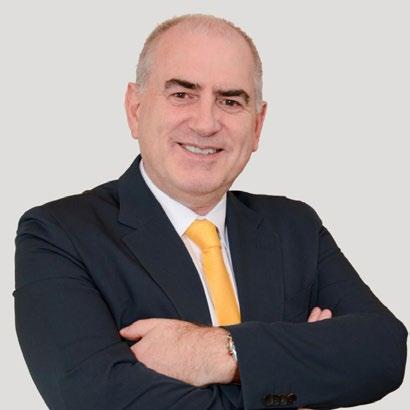
The North Sea Transition Authority (NSTA), announced in May 2023 the offer of awards for twenty Carbon Capture and Storage (CCS) licences at thirteen offshore sites within the UKCS, including sites near Aberdeen, Teesside and Liverpool.
This announcement comes shortly after the UK government set ambitions of achieving 10GW of low carbon hydrogen production by the year 2030, an increase from a previous 5GW ambition. In this article we look at what the CCS licensing announcement may mean for development of hydrogen production in the UK. CCS and the subsequent use of such capture carbon (commonly referred to as Carbon Capture Usage and Storage (CCUS)) has been earmarked as playing a key role in achieving the transition to an environmentally sustainable and resilient net zero economy, with the UK government setting an ambitious target of storing 50 million tonnes of carbon by 2035. The intention is that carbon dioxide emissions can be captured either at source or directly from the air, transferred and safely stored for future industrial use beneath the ground, mitigating the negative impact to the environment that the emissions would otherwise have had. Scotland, according to Crown Estate Scotland, is uniquely positioned to use its geological storage assets, such as those found in the North Sea, to host "cuttingedge" CCS technology and has a capacity for storage which represents 75% of the UK's total capacity.
CCS, blue hydrogen, and the oil and gas industry
Developing and improving CCS capabilities are said to go hand in hand with "blue hydrogen" production, representing an exciting opportunity for industry stakeholders and communities in pursuit of net zero climate ambitions. In short, blue hydrogen is a form of hydrogen production where natural gas is split into two parts (hydrogen, and CO2). The CO2 emissions created are then captured, and thereafter used or stored, before they would otherwise have been released into the environment. It is this CO2 capturing element of blue hydrogen production that creates an ideal match for CCS.
Many commentators and industry stakeholders believe there to be a lot of synergies between CCS, blue hydrogen production, and the oil and gas industry – highlighting that existing oil and gas engineering expertise, pipeline and infrastructure could be utilised to streamline development of blue hydrogen production and propel carbon reduction efforts. This includes the use of existing offshore reservoirs as safe storage locations for CO2, both in respect to fully depleted reservoirs, and in respect of reservoirs still in operation (as a means of extending the life of the reservoir). These synergies have the potential to sustain existing jobs in manufacturing and oil and gas, in addition to creating and supporting new

job opportunities. The Acorn Project (a joint venture between industry experts and based at St. Fergus Gas Terminals, Aberdeenshire) represents a prime example of CCS and blue hydrogen working hand in hand, and an example of the kind of project that we could see more and more of in the coming years.
Getting ready
Coupling these developments with emerging funding opportunities such as the Net Zero Hydrogen Fund and the CCS infrastructure fund, and the possible benefits and reliefs available to businesses in respect of Freeports (Green Freeports in Scotland), and CCS may represent an attractive and lucrative venture for businesses looking to enter the energy market, and for well established players including those with a primary oil and gas focus.
Whilst, at the time of writing, there is no comprehensive regulatory framework in respect of hydrogen production, transport, and storage, the Department for Energy Security and Net Zero (DESNZ) recently sought views on plans for secondary legislation to extend offshore oil and gas pipeline construction and use consenting responsibility of the NSTA to also apply to hydrogen pipelines. In the meantime, those looking towards CCS and blue hydrogen production should be aware of the existing licensing regime and the various legislative and regulatory requirements that come into play – which can at the best of times be somewhat fragmented. This includes, among other matters, consideration in relation to licensing, consents, planning, environmental factors, and health and safety. Operationally, it will also be key to ensure that standard contract terms and relevant policy documents are appropriate and aligned with what is required from a regulatory and commercial point of view.
46 www.ogv.energy I August 2023 LEGAL & FINANCE LEGAL & FINANCE SPONSORED BY www.hfi-consulting.com
HUGH FRASER INTERNATIONAL
HFI
is a specialist professional services firm led by Hugh Fraser, a Scottish corporate/energy lawyer and member of the Scottish Development International GlobalScot international trade ambassador network.
SCAN QR CODE TO WATCH FULL VIDEO
UPCOMING GLOBAL EVENTS 2023

Rio Pipeline 2023
8-10 August 2023
Rio de Janeiro, Brazil
Fenasucro & Agrocana 2023
15-16 August 2023
Sao Paulo, Brazil
International Conference on Energy System & Renewable Energy Technologies Thailand 2023



19-20 August 2023
Bangkok, Thailand
CNIBF 2023

23-25 August 2023
Shanghai, China
Intersolar South America 2023

29-31 August 2023
Sao Paulo, Brazil
PCIM Asia 2023



29-31 August 2023
Shanghai, China
Energy Efficiency Expo 2023

30 Aug - 1 Sept 2023
Bangkok, Thailand
Renewable Energy Asia 2023


30 Aug - 1 Sept 2023
Bangkok, Thailand
SPE Offshore Europe 2023

5-8 September 2022
Aberdeen, Great Britain
Gastech Exhibition & Conference 2023

11-14 September 2023
Milan, Italy
Solar Power International 2023

11-14 September 2023
Anaheim, USA
Argentina Oil & Gas Expo 2023

11-14 September 2023
Buenos Aires, Argentina
47
unique and valuable travel management solutions for companies operating in the Energy sector.
EVENTS
VIEW ALL EVENTS AT
Experts in travel management Delivering
www.travelctm.co.uk GET IN TOUCH
www.ogv.energy/events





































 dual graphite seals
taper lock grips
dual graphite seals
taper lock grips
























































 By Tsvetana Paraskova
By Tsvetana Paraskova





 By Tsvetana Paraskova
By Tsvetana Paraskova

















































 By Eivind Dysvik – Naval Architect for Marine Operations.
By Eivind Dysvik – Naval Architect for Marine Operations.

































 By Nathan Bennett, Director of Communications, RenewableUK
By Nathan Bennett, Director of Communications, RenewableUK

























































